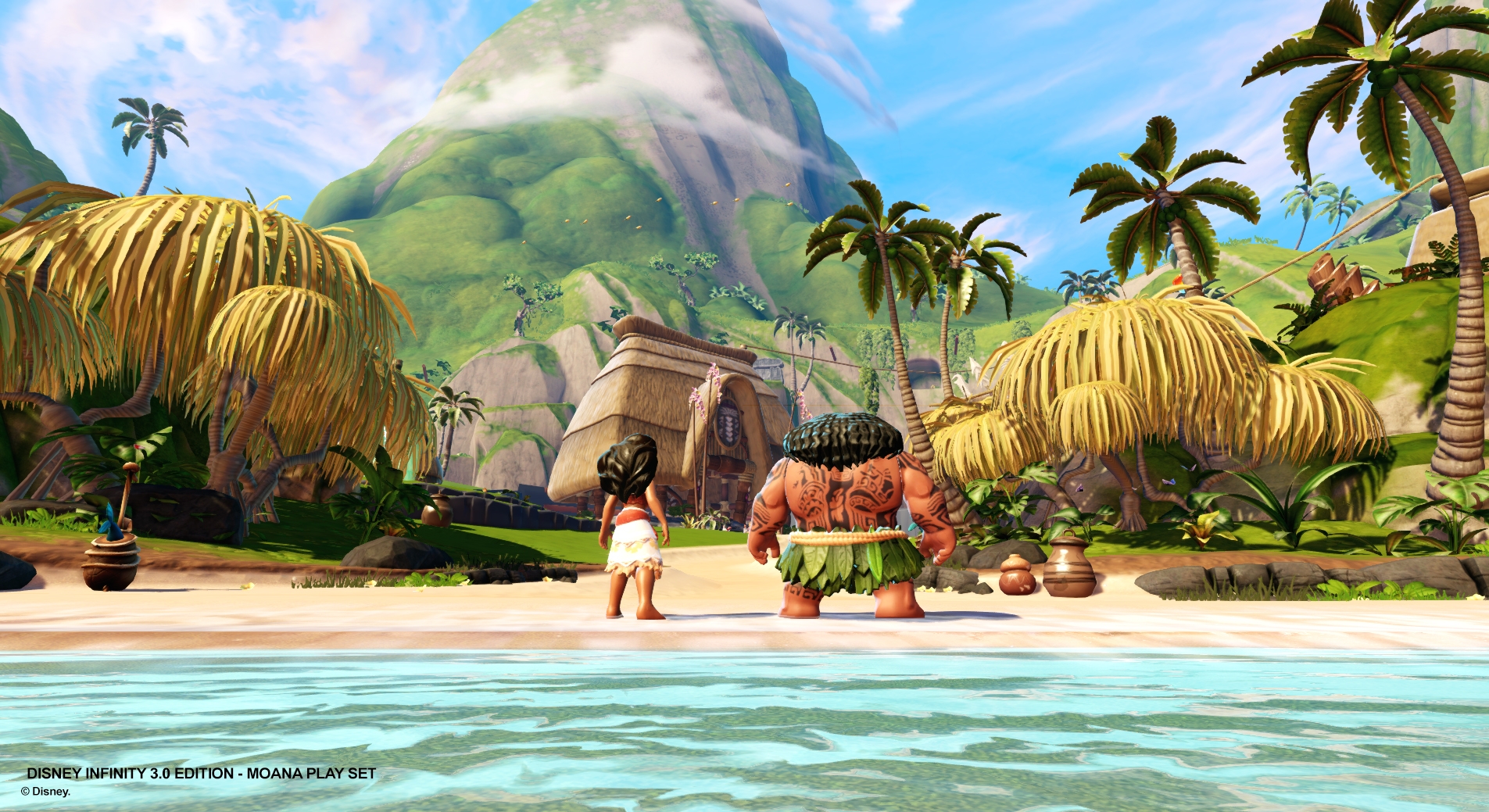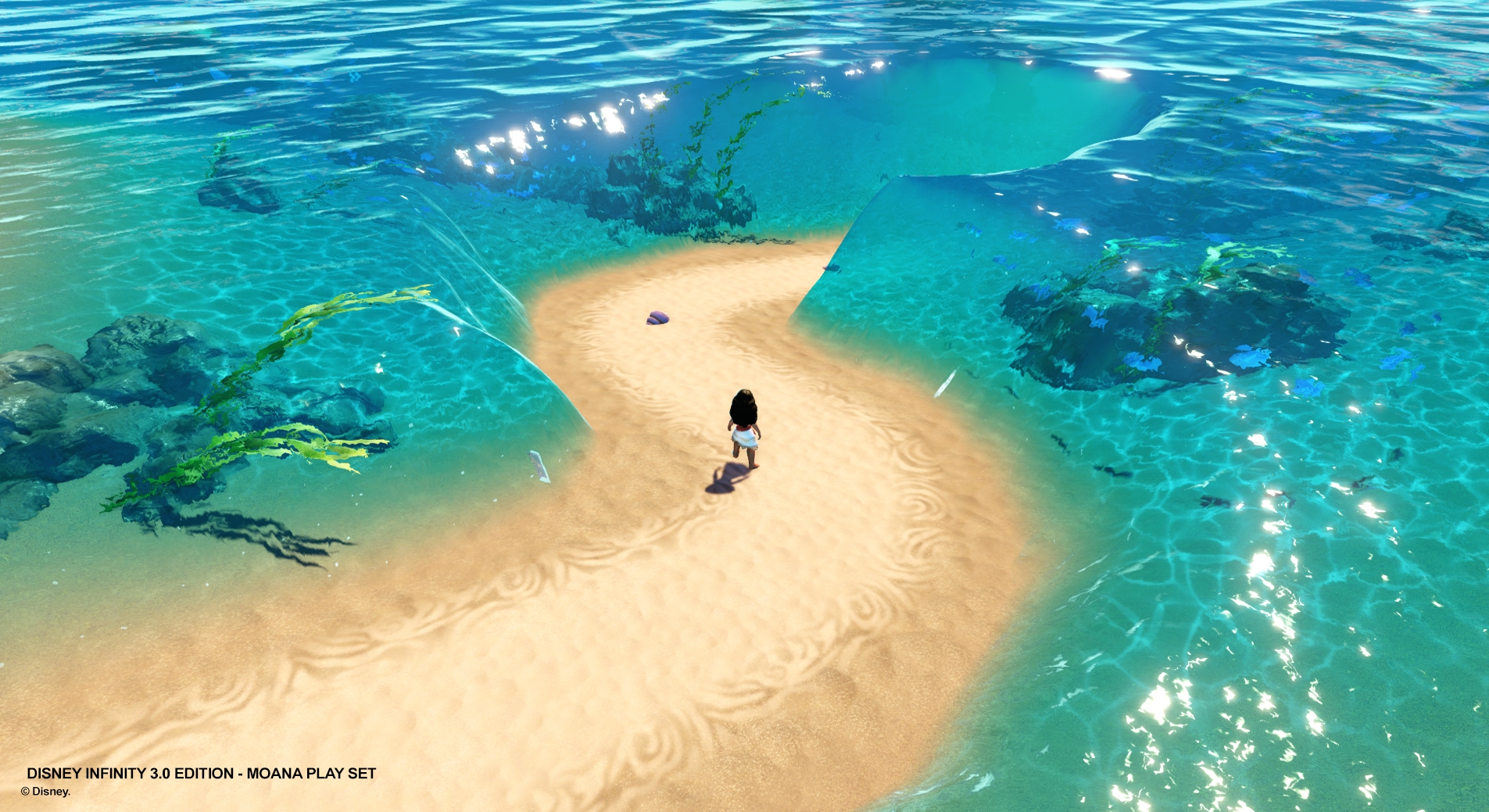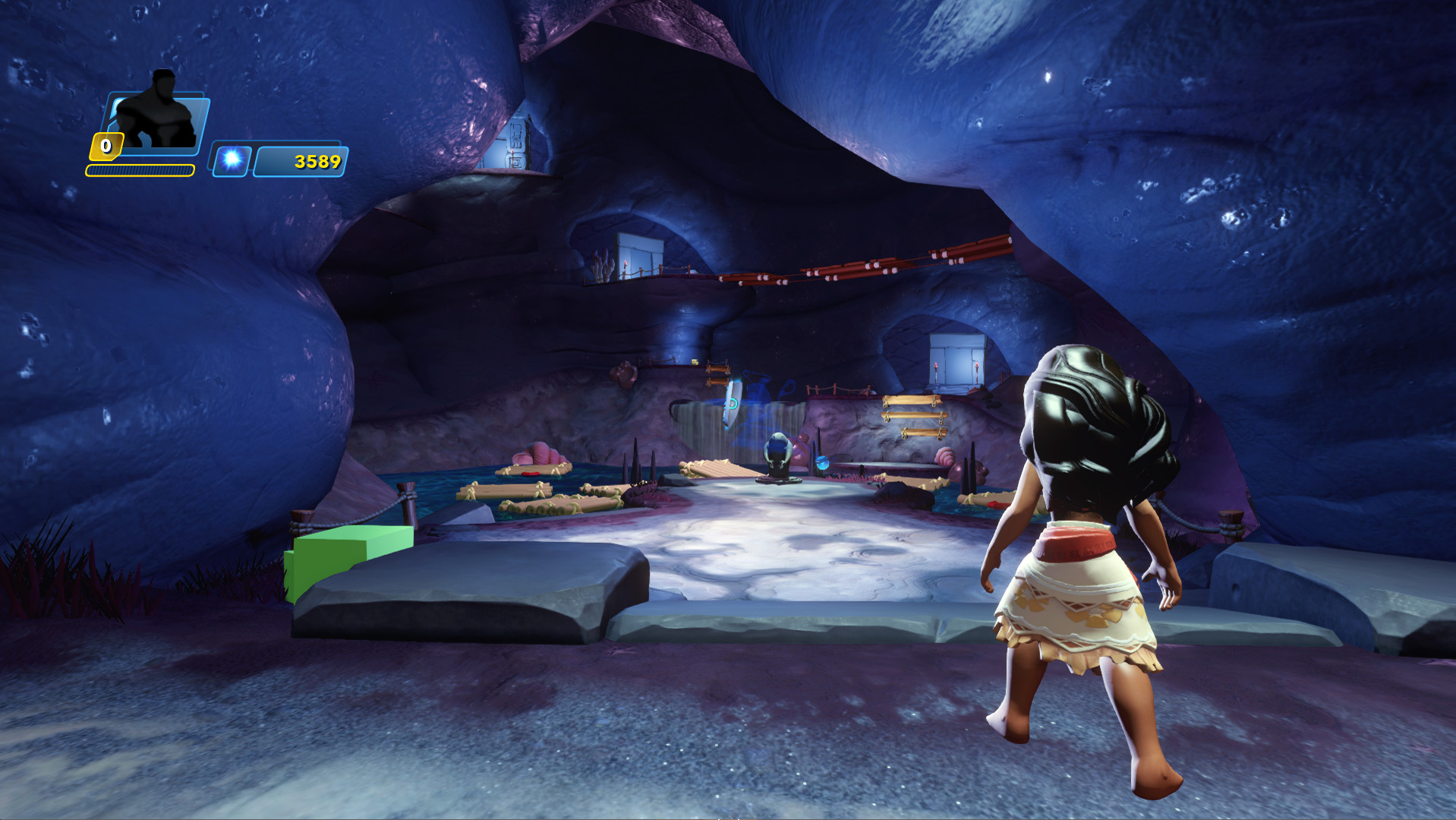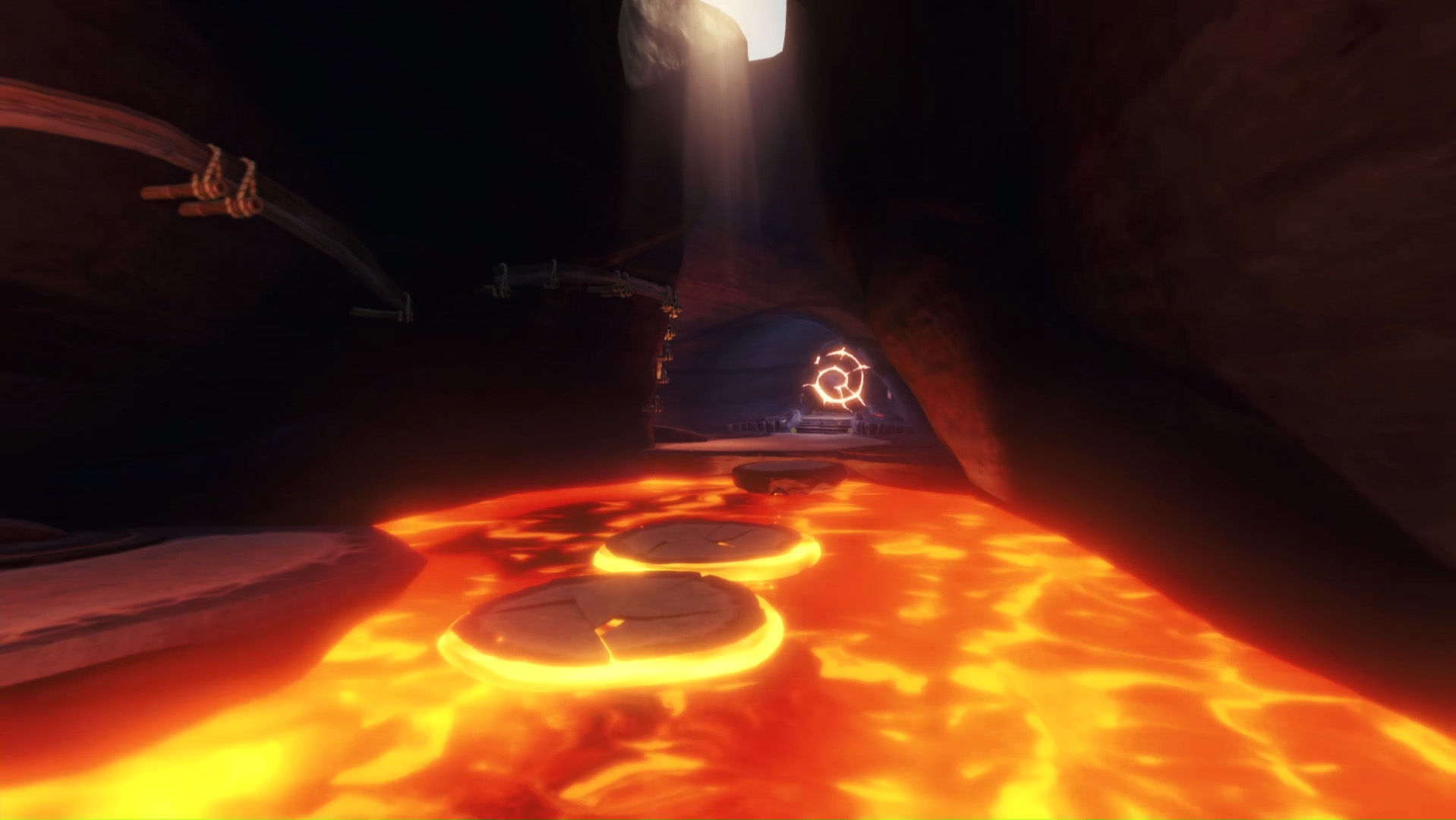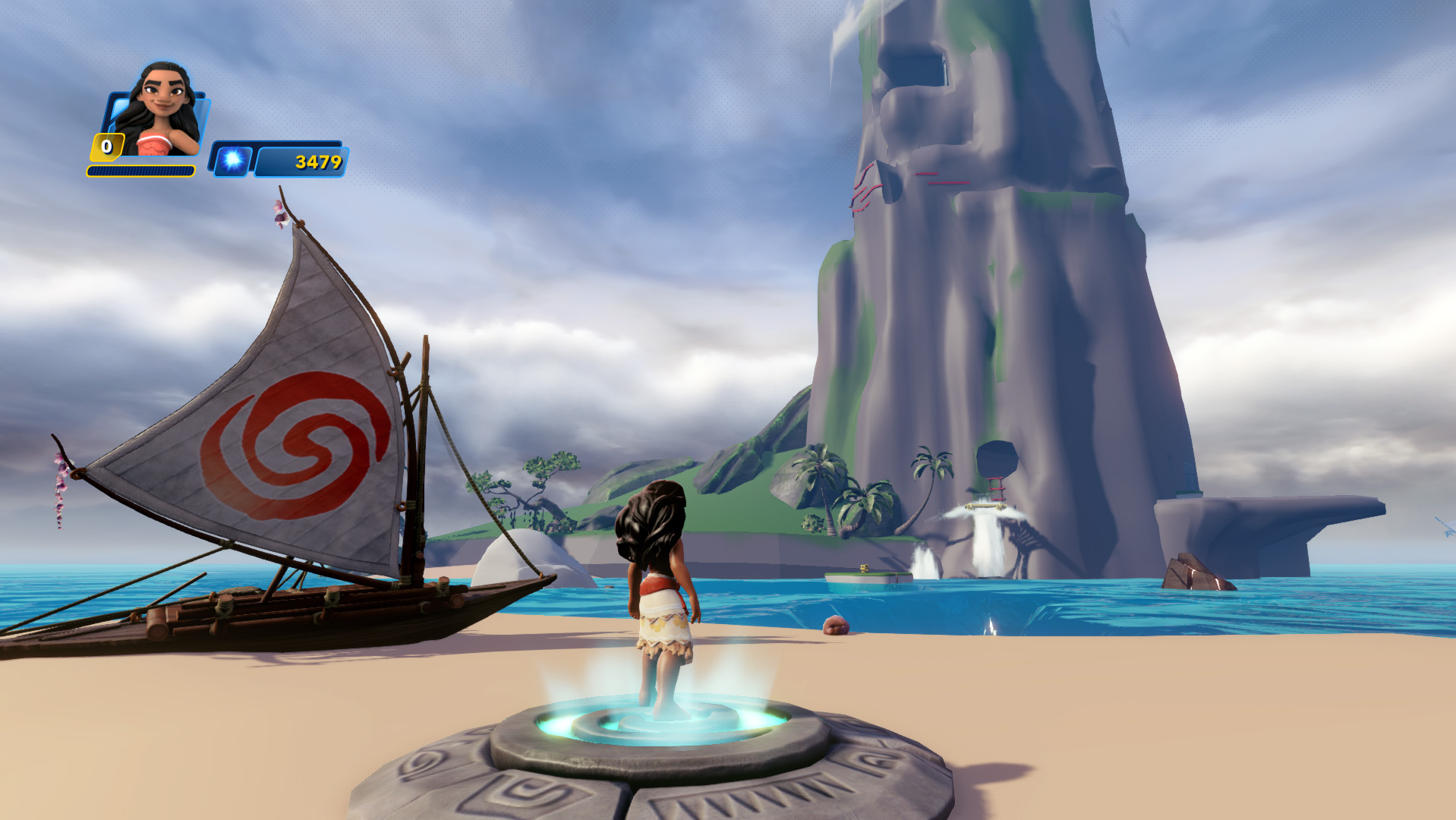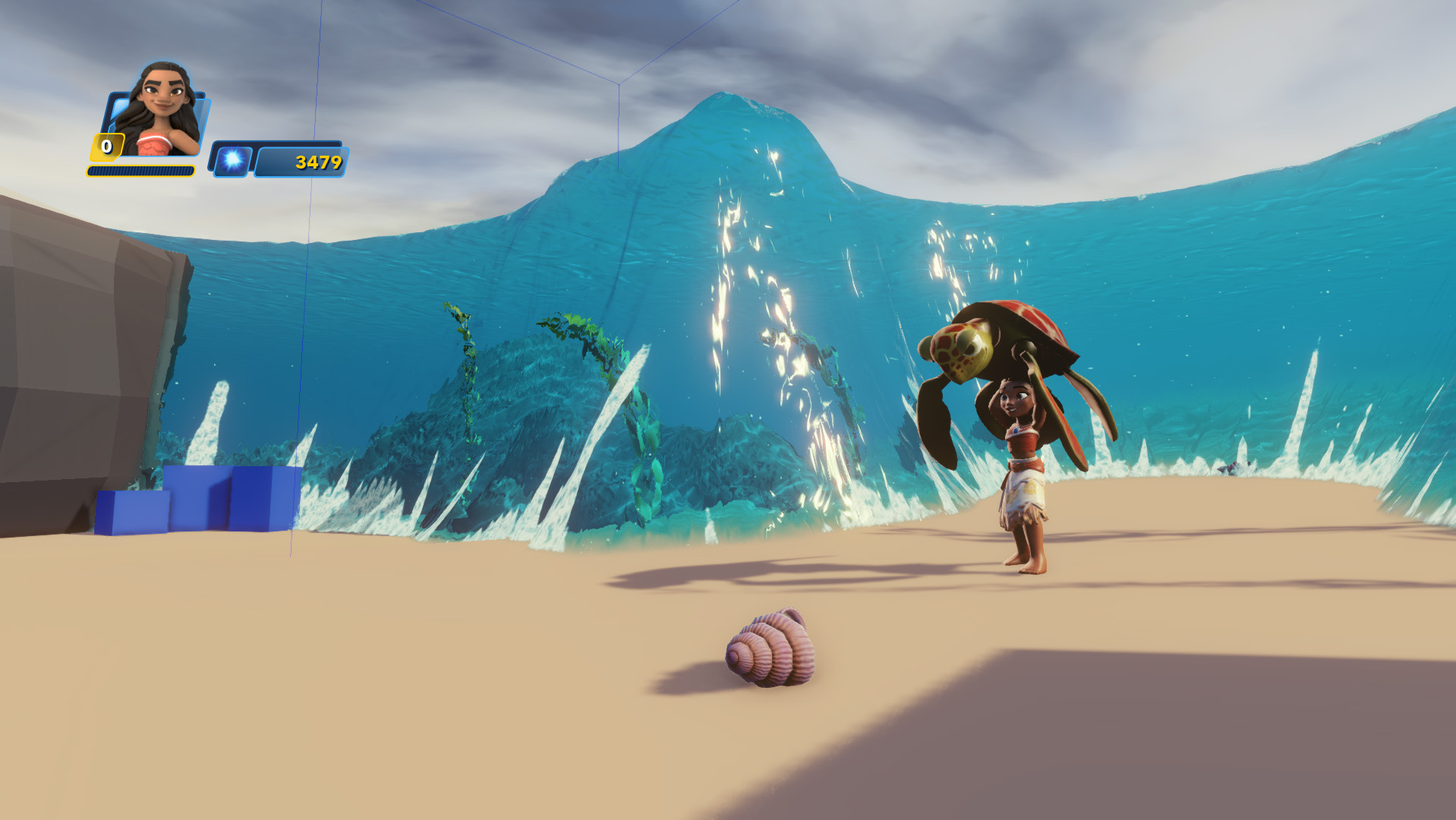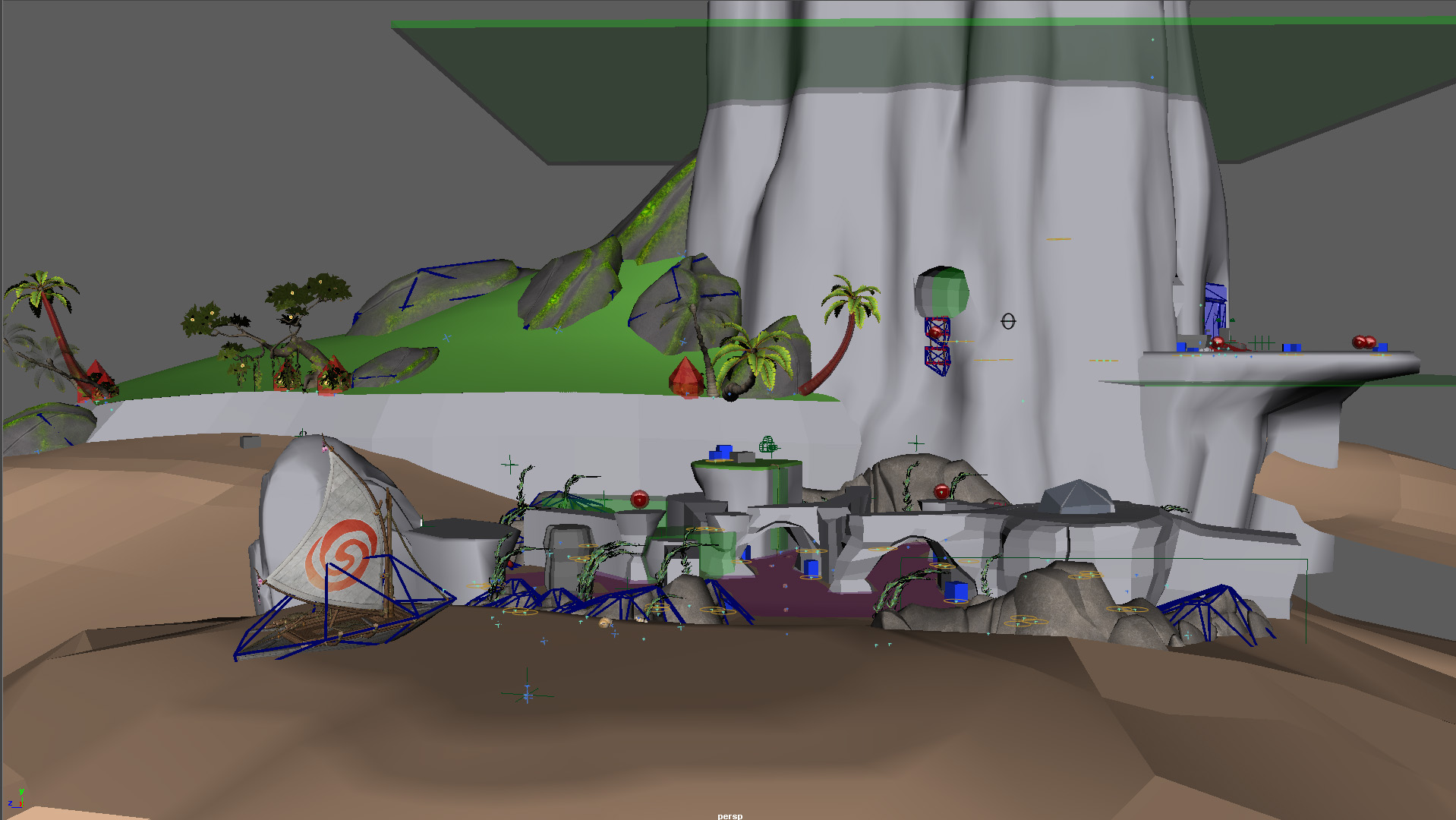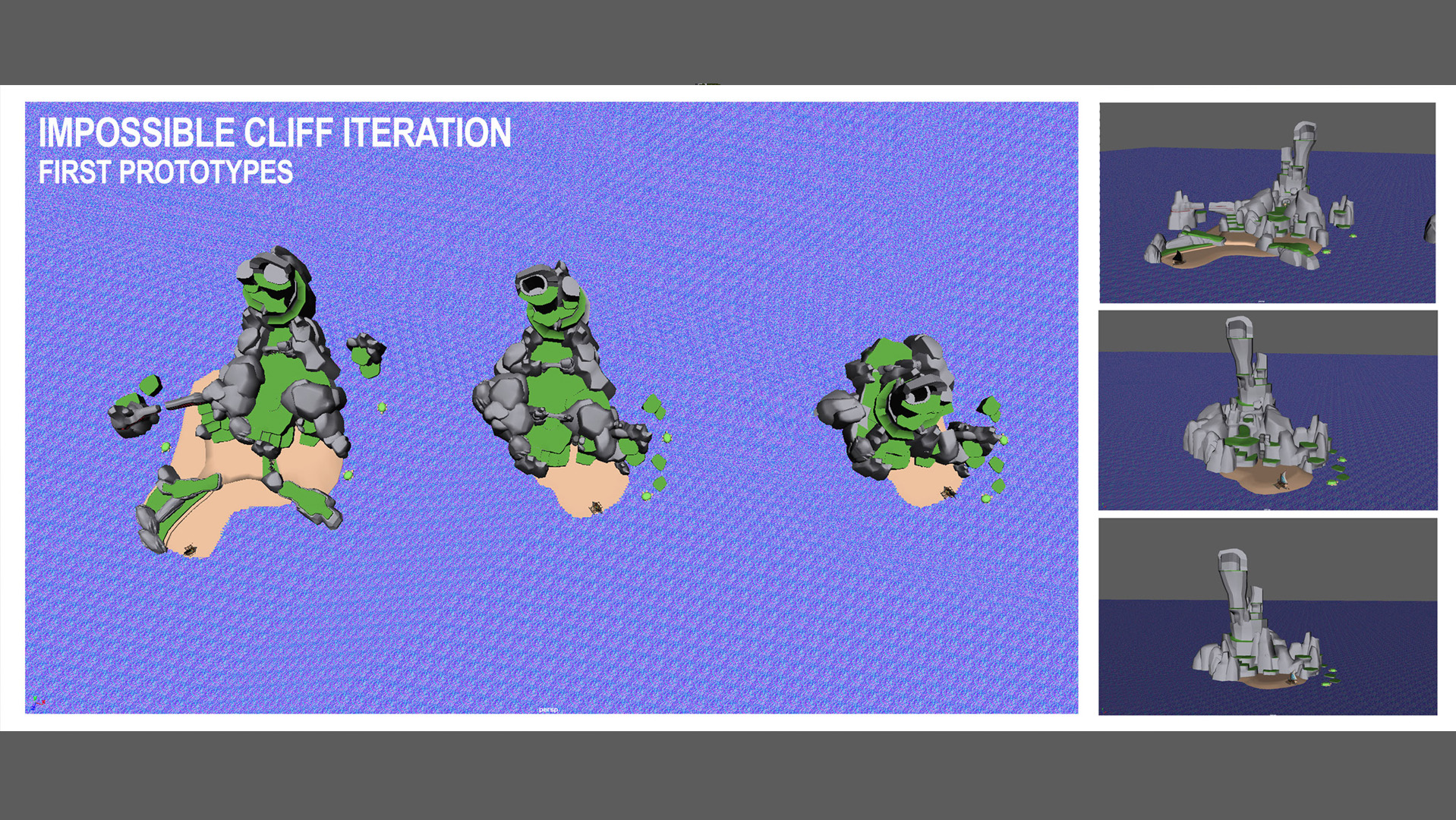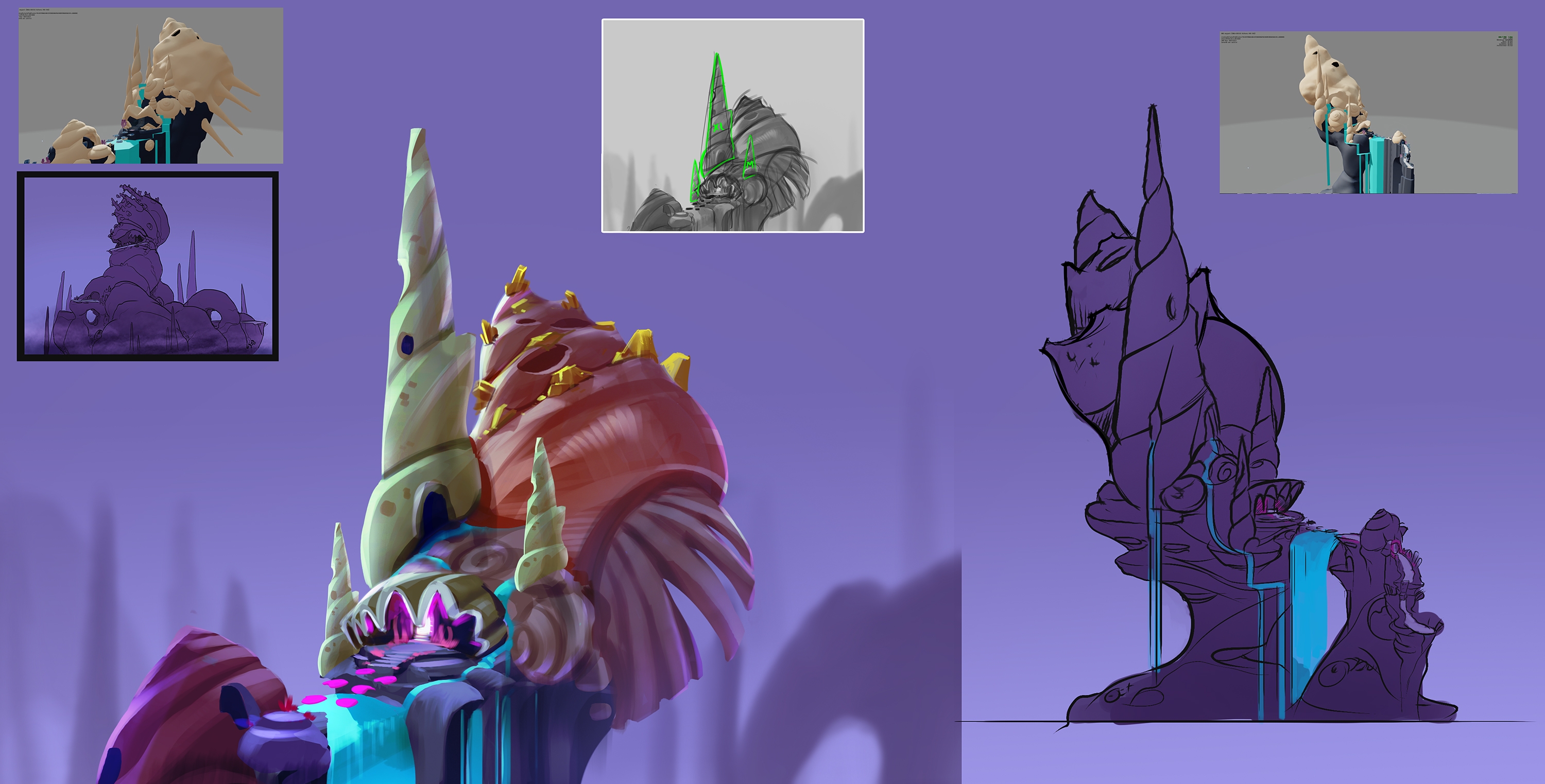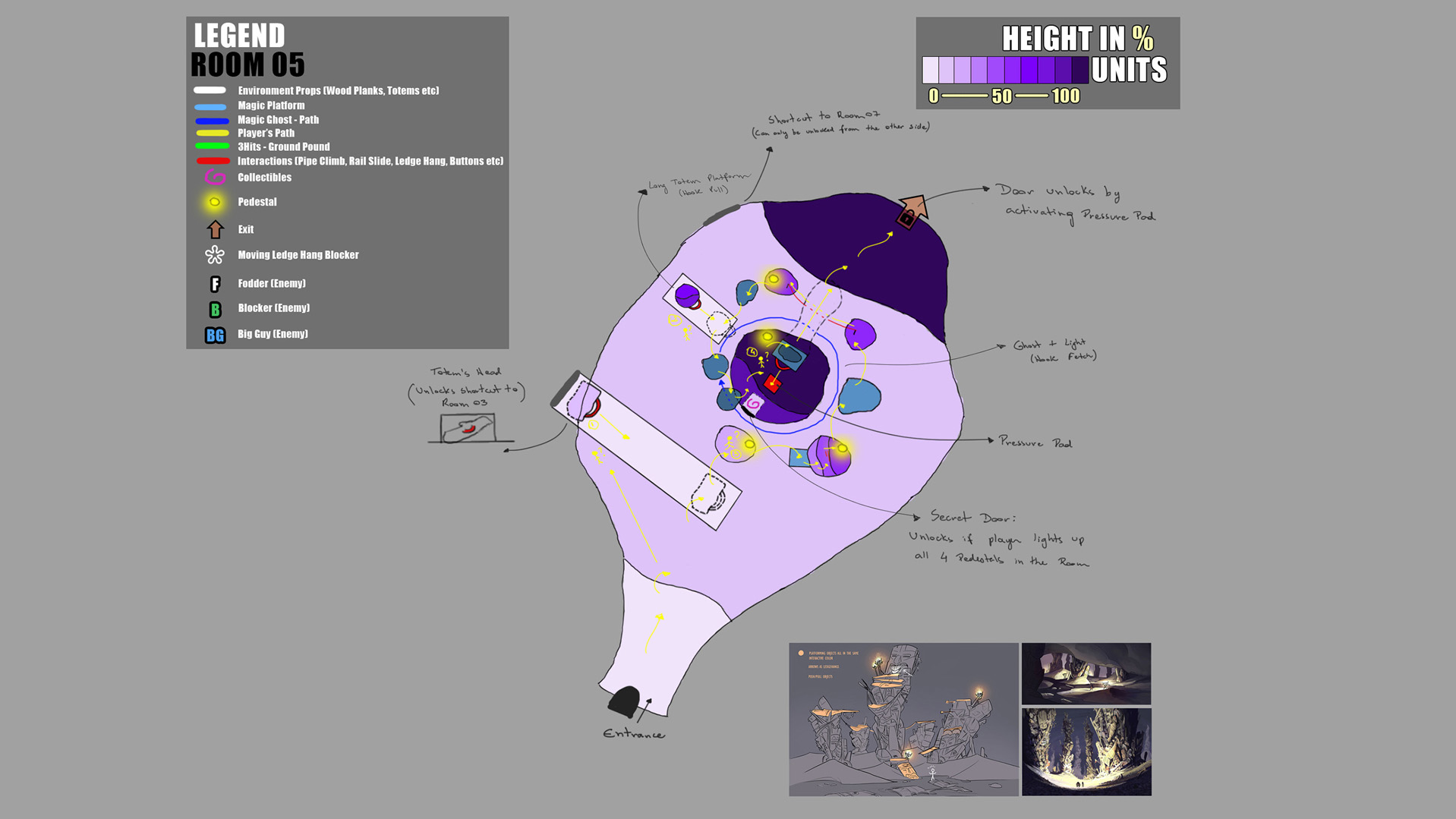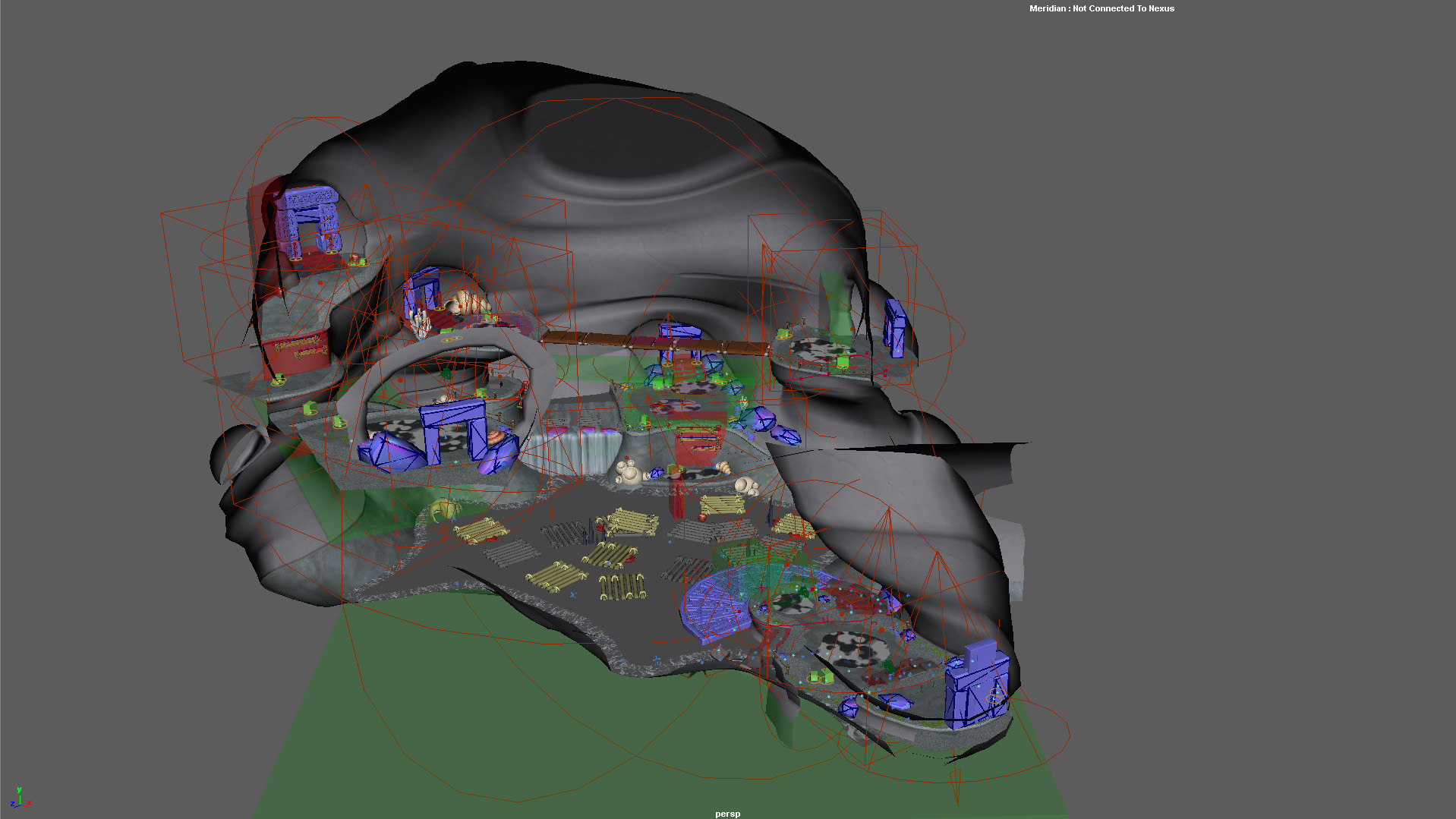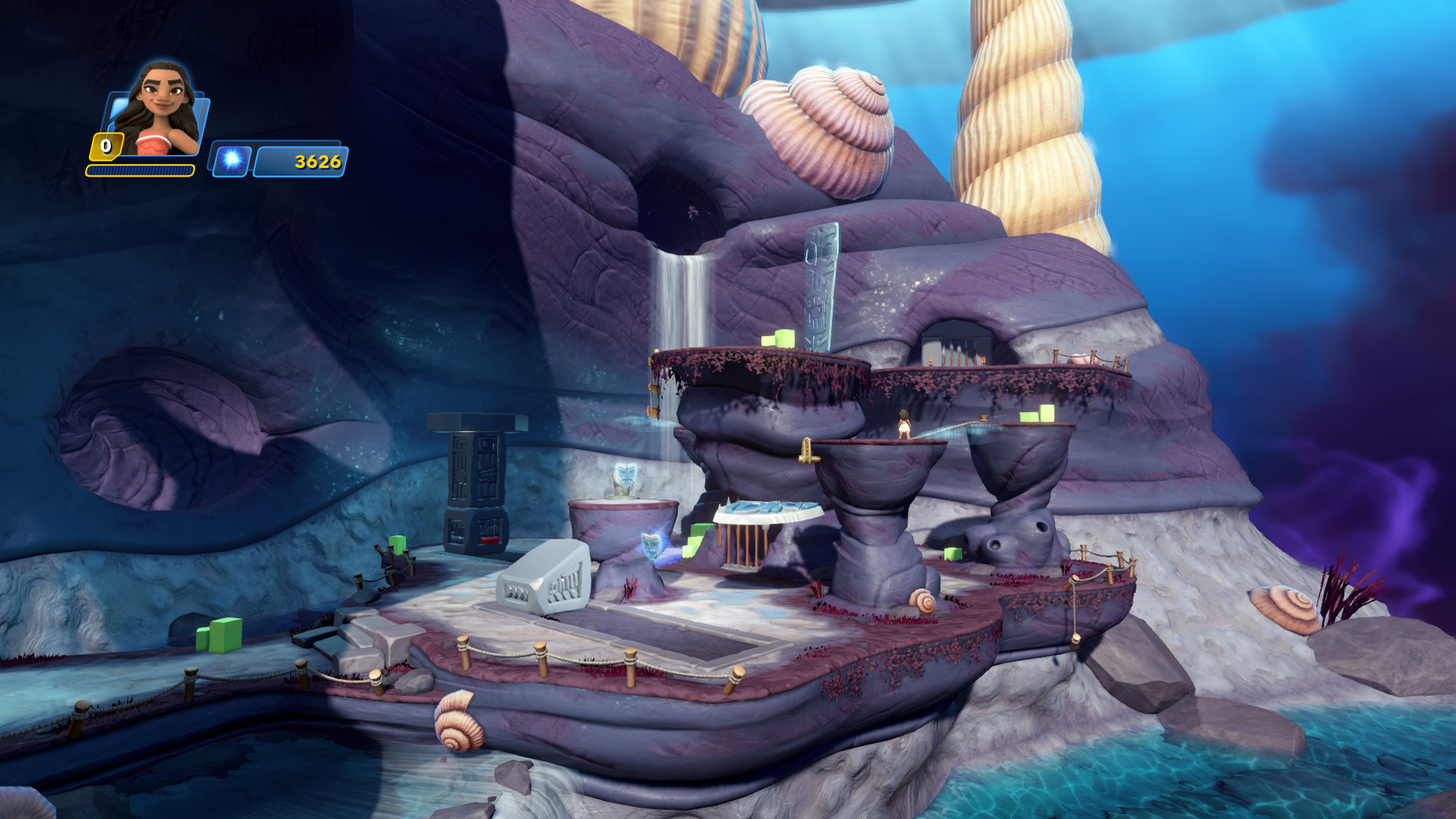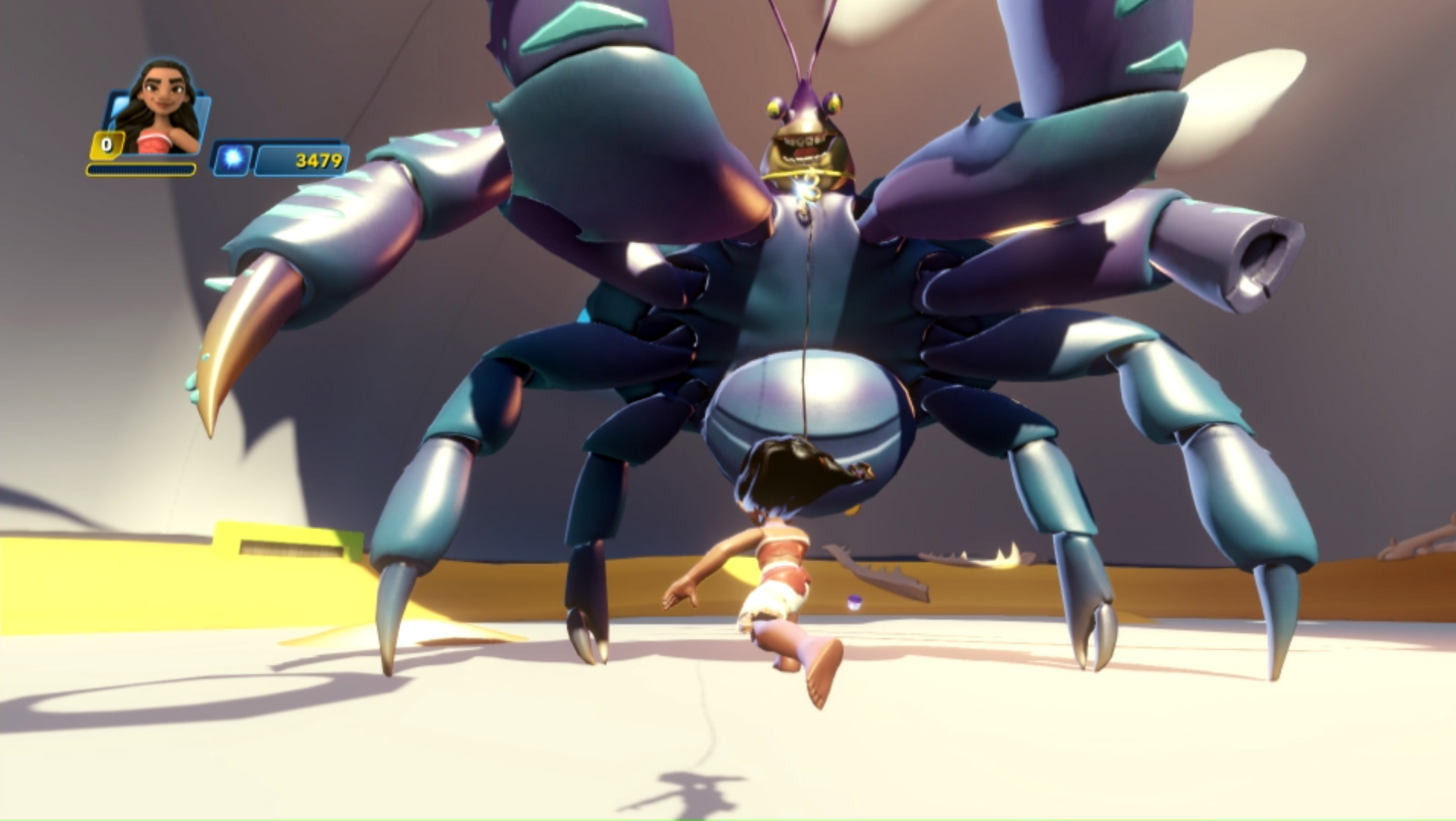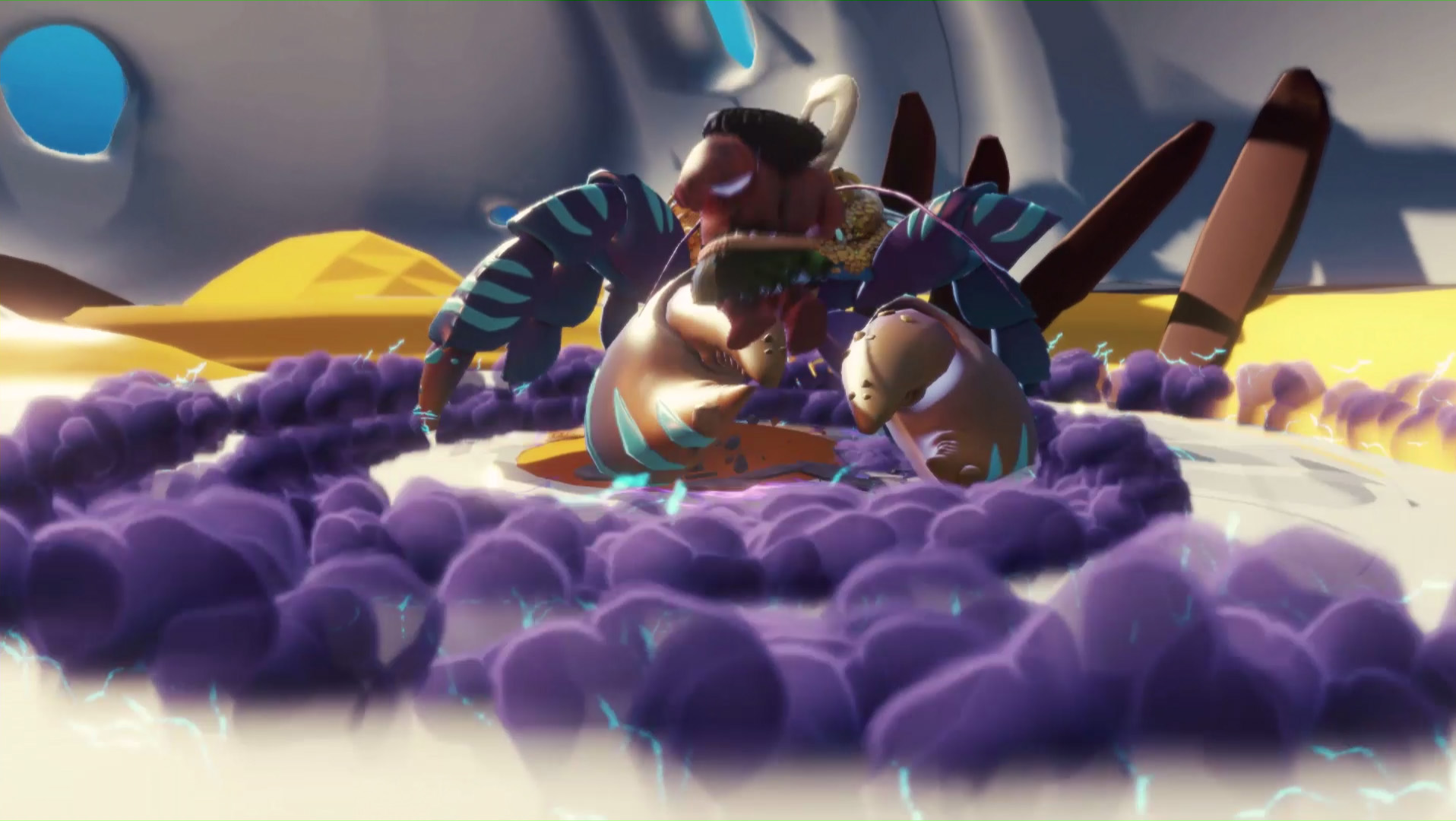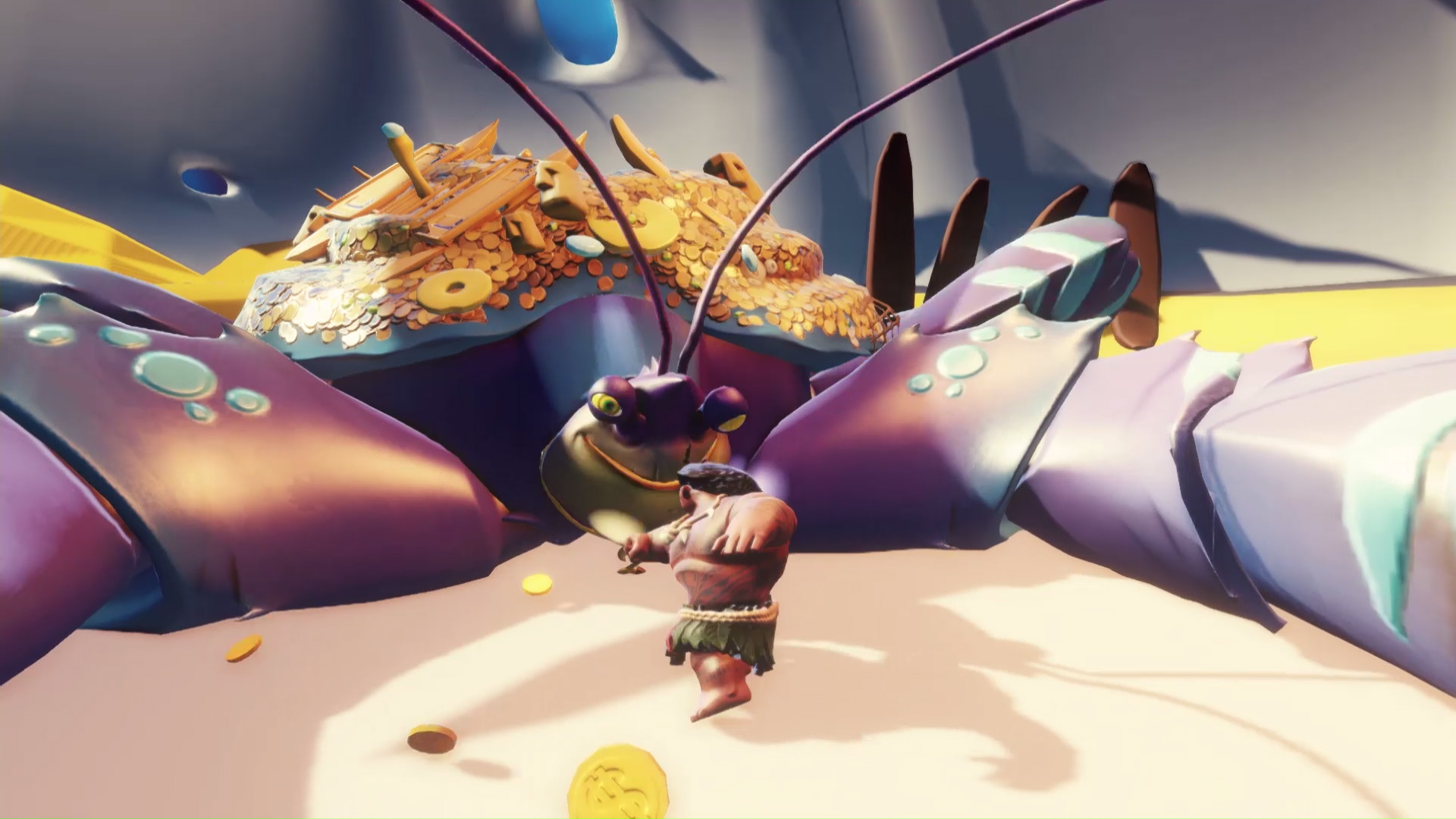
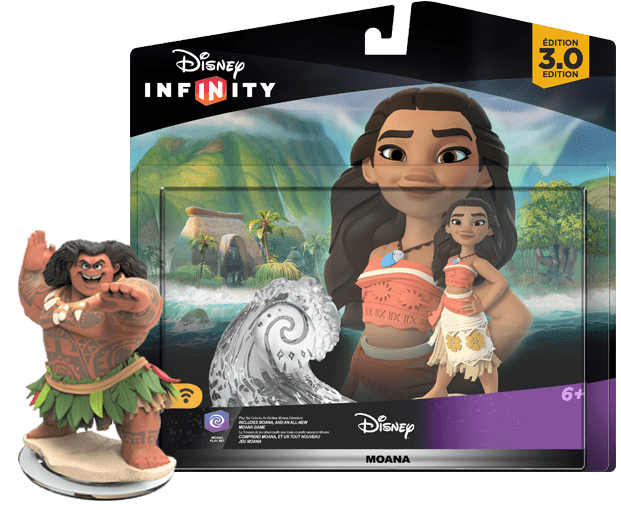
ROLE: SENIOR DESIGNER
Disney Infinity: Moana Playset is a Puzzle Platformer sandbox toys-to-life video game based on the Disney Animated Feature Film Moana.
As a Senior Game & Level Designer, I had complete ownership of two big areas of the game: the tricky and really tall Impossible Cliff and the scary and evil Lalotai Dungeon.
I was responsible for designing and balancing the new mechanics for those areas, gameplay elements, puzzle design, missions and the full level layout – from concept to final and scripted blockout.
I also had the responsibility to design our Boss Fight against Tamatoa, introduced at the end of the Dungeon.
CLIENT
Disney Interactive
Walt Disney Animation Studios
DATE
September '15 - May '16
TOOLS
Maya w/ Octane Engine, Photoshop, Hansoft, Visio
GAME OVERVIEW
The Moana Play Set was to be the first game from the Infinity series based on an “original” Walt Disney Animation Studios film.
When the Moana Play Set had just submitted it’s Alpha Build, Disney announced the closure of the Disney Infinity franchise, which meant development ceased for all play sets that were been developed at the time. Moana was one of those and unfortunately will never see the light of day.
This Play Set was our Disney Infinity take on the well known The Legend of Zelda franchise. Specifically, we did a lot of research on Wind Waker, to aid with designing the best Puzzle Platformer experience. As the source material might suggest, the play set had different Dungeons to explore, special “tools” to collect and upgrade, different puzzles to solve and an awesome Boss Fight – which I was one of the designers responsible for the initial design.
The play set takes place on MotuNui Island, on the vast oceans around it, the Impossible Cliff, the Lalotai (also know as Underworld Dungeon), Kakamora Island and finally ending in Tefiti. Each of those islands and dungeons had their unique flavour, with unique puzzles, tools and enemy guardians protecting it. The play set included different types of quests, working side by side with the storyline, while maintaining the open world layout of a good sandbox game.
Special features in this game included our “Moses Tech” that allowed to dynamically split the water once the player was close to it. This feature creates a lot of fun gameplay opportunities, with sea life dropping of from the water etc; and Maui’s Magic Fish Hook, that was used as a tool that would unlock new powers and game mechanics over time.
RESPONSIBILITIES
Level Design
Impossible Cliff & Lalotai's Dungeon
Responsible for concepting, paper layout, greyboxing, enemy encounters and scripting. I had full ownership over the Impossible Cliff, Lalotai’s Dungeon and Tamatoa’s Boss Fight.
Game Design
Puzzle Design & Game Mechanics
I had full ownership over all of the puzzles and game mechanics introduced on both levels that I was responsible for. My level also introduced the "Hook Pull" mechanic, which would be used for the rest of the game.
Collectibles
Mapping Collectibles & Secrets
Responsible for mapping and assigning all sort of Collectibles and Unlockables. I’ve mapped all of the Infinity Capsules, Checkpoints, Combat / Music Chests and Maui’s Magic Bug Holes.

DESIGNING PUZZLES FOR KIDS
Without a doubt, designing puzzles for kids was the biggest challenge that I faced while developing Moana. It took many playtest sessions and iterations to be able to create a successful puzzle that achieved a balance of being neither too easy, nor too frustrating.
One thing that I noticed while observing kids playing the puzzles is that, different from adult players, kids tend to give up on the game as soon as they reach their frustration limit. They will easily start losing their sense of attention and interest. We tried many different things to design around this, but nothing seemed to work. Finally we decided that in order to improve puzzle’s comprehension, we needed to remove the extra noise, distraction and unnecessary paths around the dungeon, keeping only the vital elements and creating better scenarios to introduce each puzzle.

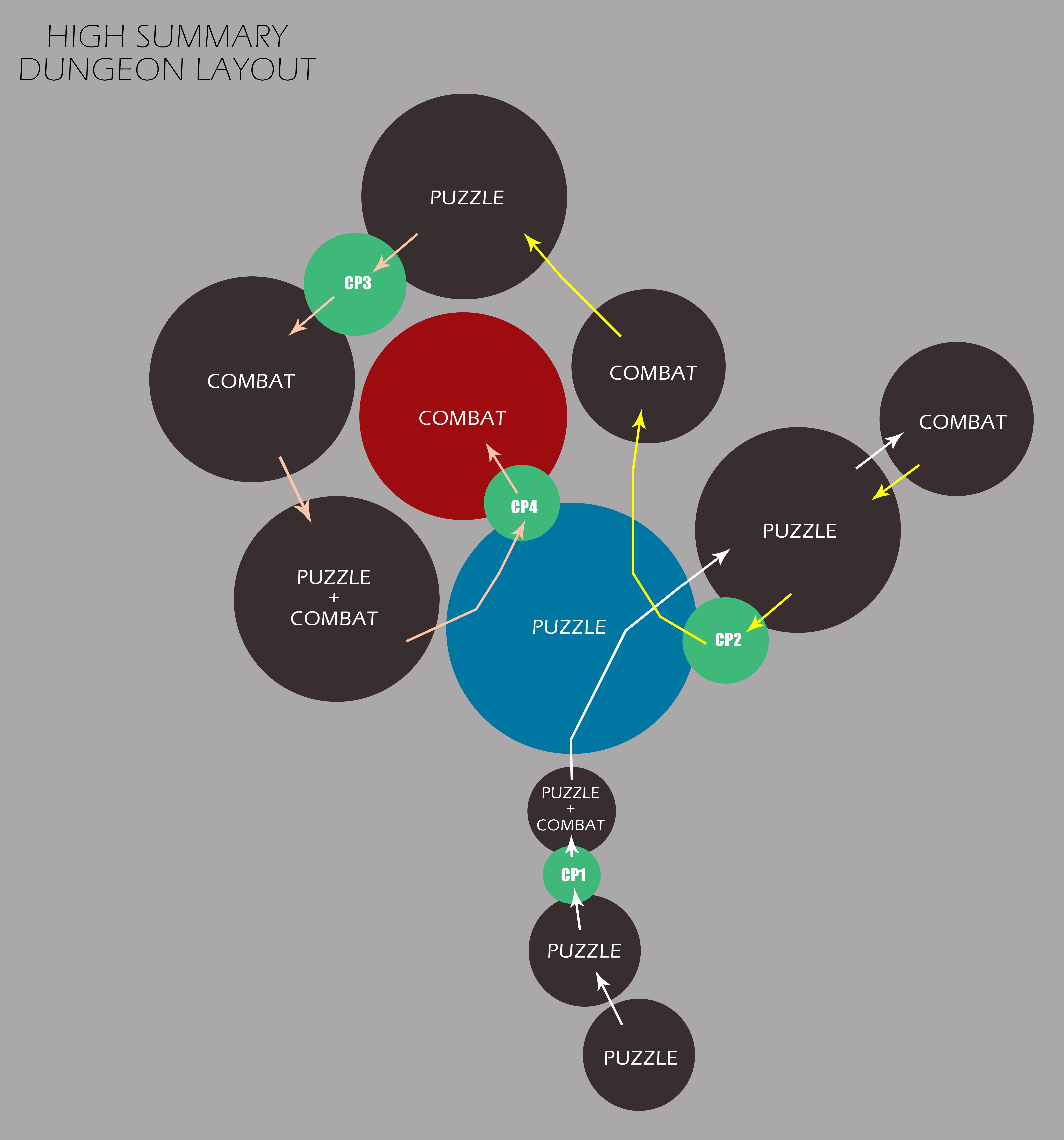
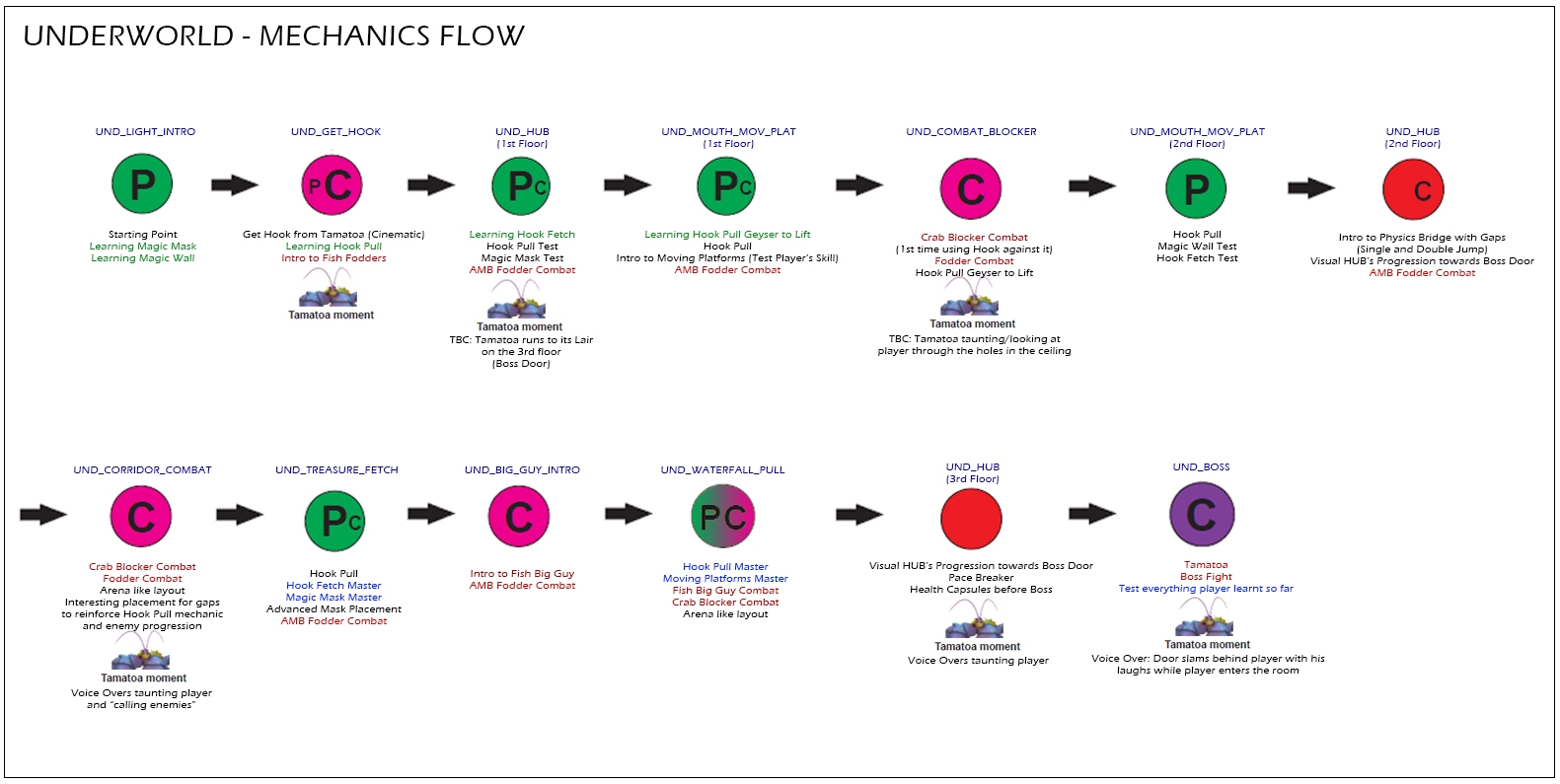
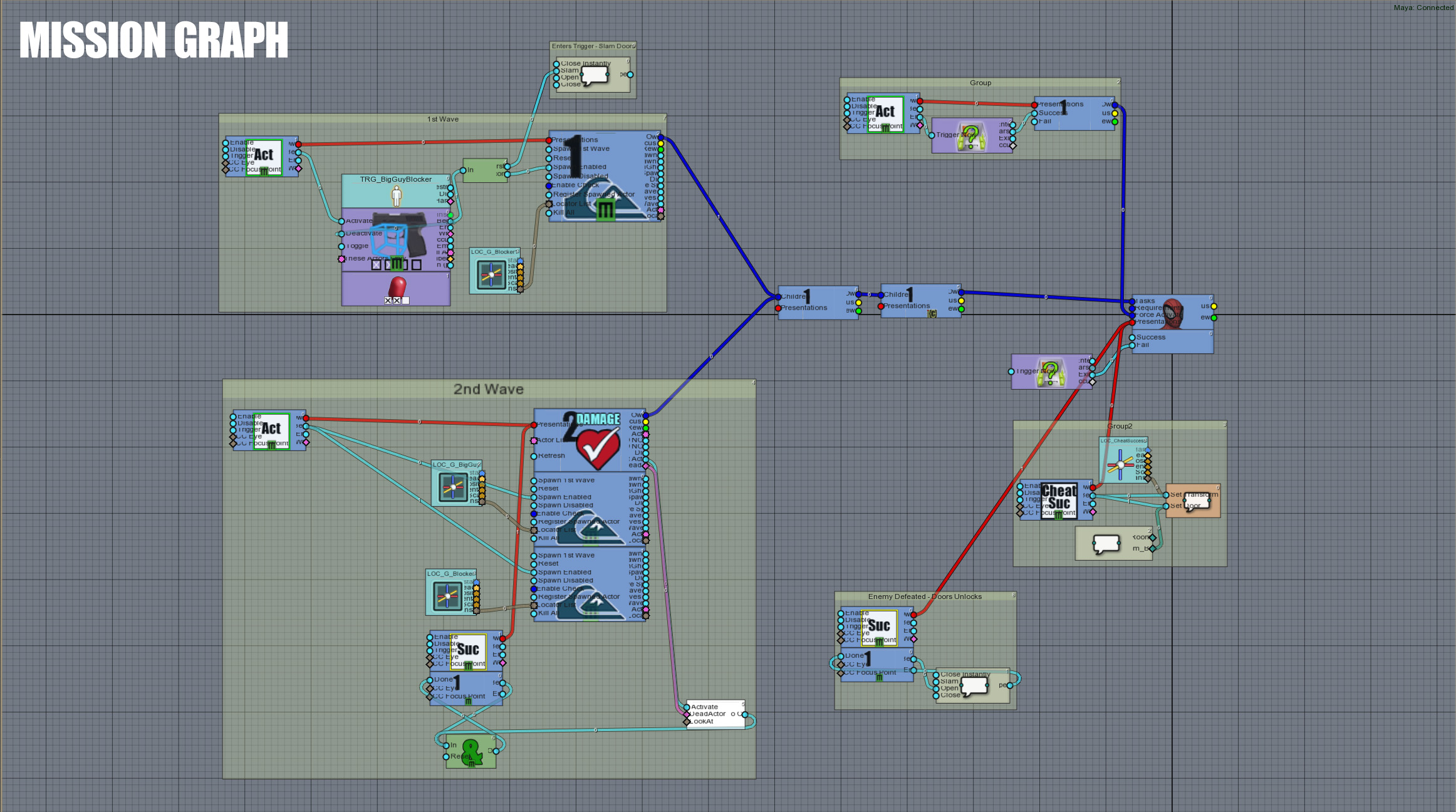
When introducing puzzle elements, the best solution we found was to slowly teach each element of a puzzle and distribute it across the dungeon, giving time for the kid to understand it and to put those pieces together in the right time. To do so, we decided to have what we called “Dungeon Rooms”. Here we split the dungeon in different parts – or rooms – allowing us to better control the pacing and allowing us to tease, introduce, test and master each piece of a new puzzle and game mechanic.
From there on, we managed to drastically increase the difficulty of a puzzle closer to the end of a Dungeon, allowing kids to solve these without becoming frustrated, but instead, feeling rewarded by their knowledge growth. It just felt natural and they gradually learnt how each piece of the puzzle and mechanic were put together, and could move on with no issues.
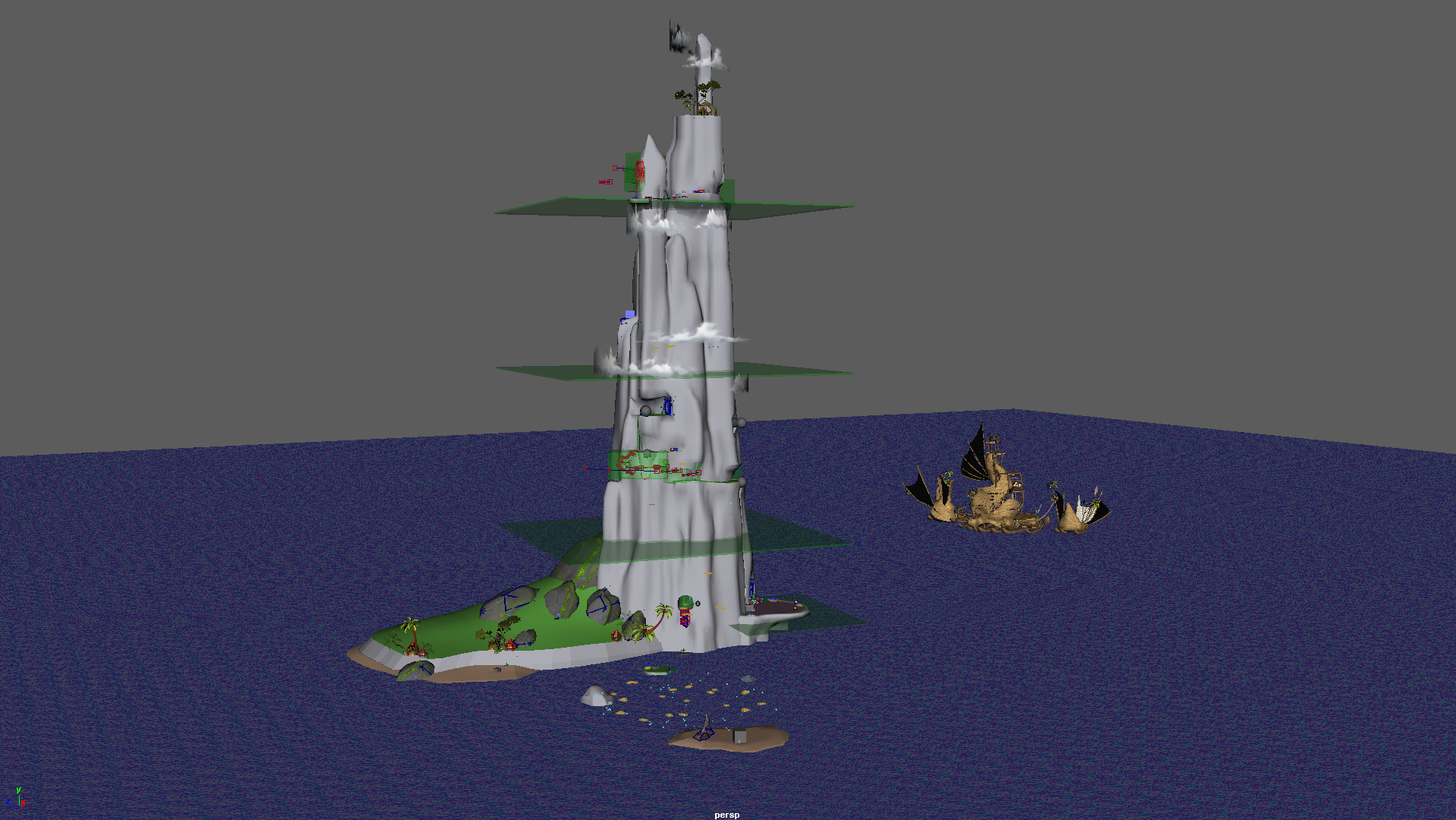
THE IMPOSSIBLE CLIFF
The first of the two levels that I designed in full, the Impossible Cliff is a very tall and hard to climb island that gives access to the Underworld – also known as Lalotai’s Dungeon.
The intention with this island was primarily to support the film’s vision and to tie all the story elements of the game together. Maui and Moana are in search of the Magic Fish Hook that is located in Lalotai. The only way to get there is by climbing the tallest cliff and jumping into the portal. As this island is very vertical and features a hard climb to the top, we decided to make the focus of this level around very tiny spaces, complicated ledge hang sequences, rope climbs and dangerous rocks collapsing on the player’s way to the top. Our objective was to create a strong sense of vertigo.
We’ve also introduced the Kakamora Enemy and Ledge Hang Blocker for this first time. As an enemy, their behaviour is the classic Timed Melee. The player needs to observe their movement and dodge their attack at the right time. Once they get dizzy, the player can attack them back. For the Ledge Hang Blockers, this Kakamora type walks over the ledges while the player is also climbing it, and if they touch the player, they will attack and drop them down.
As I started to understand which gameplay purpose I wanted to achieve with the Impossible Cliff, the island got smaller and smaller, fitting perfectly with what we wanted and the pacing we wanted to deliver here.
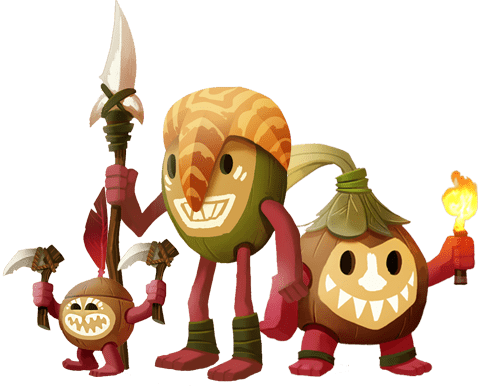


WATER MAZE GAMEPLAY
As mentioned before, one of our unique features in this play set was the “Moses Tech”. This technology have allowed us to create dynamic water movements that would split and create paths once the player was close to it.
In general, players always found the tech itself impressive when experiencing it for the first time. It felt really realistic and it was always satisfying to be able to "manipulate" the water and observe which reactions would come from that. But, of course, it would be a waste of time to have include this feature without adding some cool gameplay elements here.
For the Water Maze in the Impossible Cliff, we added new types of sea life, the funniest being the Octopus. The player could move the water around them, making the sea life jump off from the water, catching and playing with them or throwing back to the ocean. Once the player had unlocked the Magic Fish Hook in the following Dungeon, they would be able to return and use the fish hook to fish the animals from far away, creating extra opportunities of play.
The Water Maze also created a maze experience – as the name might imply – with some puzzle-ly traversal to solve. We also added some water geysers that would explode from the water, creating lifts to reach higher spots in the level. Finally, some combats against some crabs was also introduced there, and some collectibles, treasures and magical bug holes – Maui’s exclusive – to access.
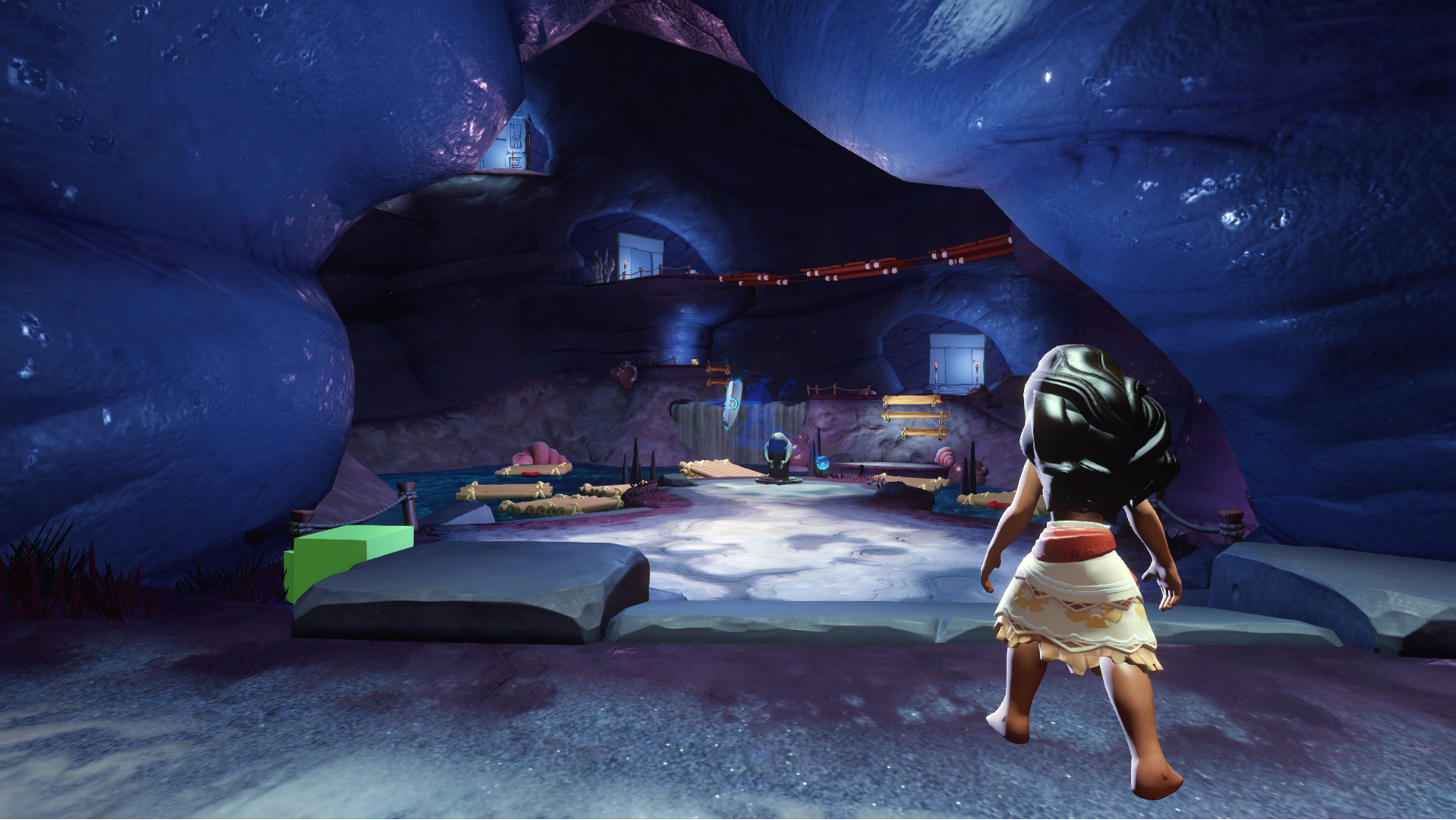
LALOTAI: DESIGNING THE WIND WAKER OF POLYNESIA
“Maui’s Magic Fish Hook is being held in Lalotai, the oceanic Dungeon. Moana and Maui must get there by climbing and accessing it’s entrance from the top of the Impossible Cliff. After jumping in the portal, they find themselves in a dark cavernous place with phosphorous highlights – they are in Lalotai, a place guarded by a Giant Crab creature named Tamatoa. Both nervous, Maui schools Moana on how to put on a “Warrior Face”. As they enter the lair of Tamatoa, they find the Magic Fish Hook – and Tamatoa – who is really angry to see them!”
With this premise in mind - received from Walt Disney Animation Studio's team itself - Lalotai was the first Dungeon EVER introduced in a Disney Infinity Play Set. And, as The Legend of Zelda franchise is clearly a masterclass in this category, we decided to do a lot of research around it before designing our own Dungeons in Moana. I went through the exercise of breaking down loads of examples of Dungeons, from many different Zelda games. But there was one in particular that always had a special place in my heart when it comes to introducing new mechanics, teaching puzzles in the right pace and creating a full atmosphere around it: The Dragon Roost Cavern from The Legend of Zelda: Wind Waker.
It is very clear that a lot of my inspiration came from this Dungeon. At the same time, Wind Waker was developed for an older demographic so I had to ensure the puzzles I introduced would fit with our target audience, something achieved through playtesting these with real players. As a designer, I’ve never had so much fun as I did while designing Lalotai.
A NEW TOOL, A KEY AND A BIG TWIST!
Lalotai’s Dungeon formula wouldn’t work if we couldn’t introduce a new and exclusive “tool” to the player. Luckily for me, both Maui and Moana were in search of the Magic Fish Hook and the first time they would get their hands on it was in Lalotai.
By offering the Fish Hook as a completely new tool in this Dungeon, I was able to introduce the Hook Pull mechanic for the first time and to re-use and explore every bit of it. This mechanic served as the “key” solution of most parts of the puzzles in Lalotai. By combining it’s main expected gameplay with a secondary new mechanic – the Magic Mask – I could develop a full experience for this Dungeon that turned out to be very unique, challenging, and rewarding for players.
For every new room in the Dungeon I would tease and teach something new, while also throwing a twist into the game. Every new twist would indirectly force the player to explore more of the main Hook Pull mechanic, until finally understanding new ways to combine and use it. Hook Pull then turns into Hook Fetching objects in the distance, that turns into placing objects down on the right place and then moving and fetching it from different parts of the map etc.
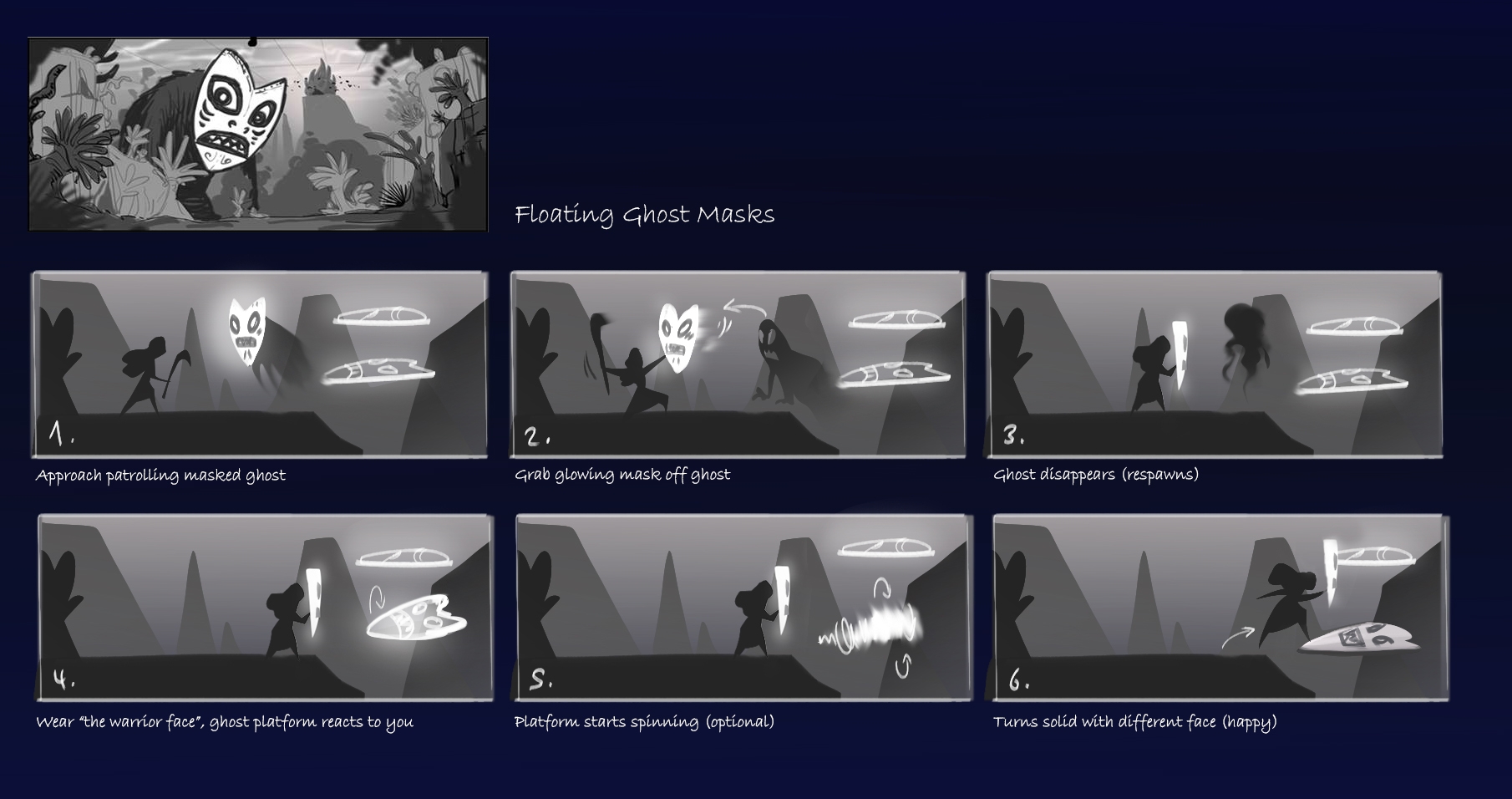
At the end of the day, when the player felt confident enough with this combination of mechanics, we would introduce them to the Dungeon’s Boss Fight, to give them a chance to finally master it and prove everything they have learnt thus far.
Level design wise, it was really important for me to create a sense of progression within the Dungeon’s HUB. I wanted the player to know how far into the Dungeon they were and if they were close to their main objective. To do so, I decided to split the HUB into three floors. By forcing the player back into this big room – every time higher and higher – and showing how much they traversed, the player would have a sense of satisfaction and knowing that they were going on the right path. The re-use of this room in particular also helped on reducing extra render work for the Environment Art team.

GAME MECHANICS AND TOOLS
MAGIC FISH HOOK
The Magic Fish Hook is the item that both Maui and Moana are trying to find since the beginning of the game. This is the first tool that we introduce in the Play Set and from this Dungeon on, this tool gets upgraded two more times, teaching different magic powers and unlocking new game mechanics.
On Lalotai, by collecting the Fish Hook, the player learns how to Hook Pull things and on how to use this skill to also stop some of the enemies attacks. There are many Hook Interactions in this Dungeon (represented as a Gold Ring), such as pulling rock pillars to create bridges in between gaps, pulling switches to open gates, pull rafts over water to traverse, or even pulling them over water geysers to use it as a lift. And finally, fetching Magic Masks from ghosts and pedestals around the level, to be able to solve puzzles.
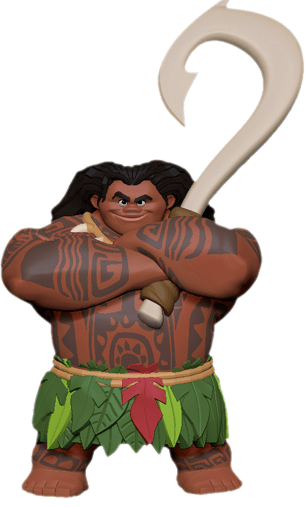
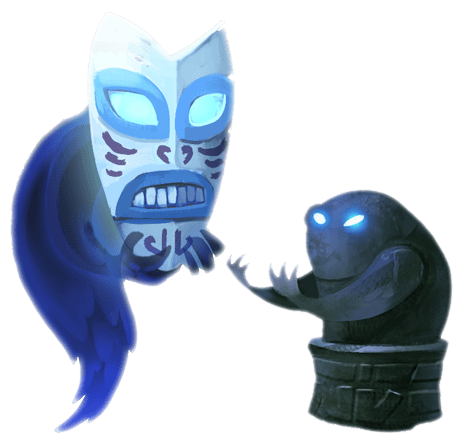
MAGIC MASK AND PEDESTAL
Another new mechanic that plays a big part in Lalotai is the Magic Mask carried by floating spirits. As this Dungeon is the representation of the Underworld – the world of the dead – we chose to include a mechanic that tied thematically to this idea.
When the masks are in proximity with certain items, they cause them to become solid – creating platforms for the player to use, but also barriers at certain points. Additionally, masks could only be obtained by using the Hook to fetch them from ghosts.
One constraint I introduced was that masks must either be held by a ghost or by a player, otherwise they would despawn. This allowed me to create interesting puzzles with increasing complexity.
COMBINING IT ALL TOGETHER
By using the powers of the Fish Hook and combining the two previous mechanics mentioned above, the player can Fetch Magic Masks from moving ghosts in the distance and hold it over their heads. We called this action “Putting a Warrior Face”, in reference to the film's sequence in Lalotai.
Combing these mechanics, I created puzzles around solidifying platforms to cross gaps, creating bridges and even solidify objects with Hook Pull Interactions that weren’t possible before.
I also introduced a twist to this mechanic, that made some of the puzzles more challenging. In some instances, a transparent wall would get solidified in front of the player’s path, not allowing them to progress while holding the mask. But to make it to the next room, they would need to a mask. Some solutions for these cases were based on observing and analyzing the room from different angles and navigating it from different paths. By finding a new Pedestal on the other side of the room and placing the mask there, this would allow players to cross through the now transparent wall and finally hook fetch the mask from the pedestal from the other side. This, and many other scenarios where explored and proved to be a success among the players.
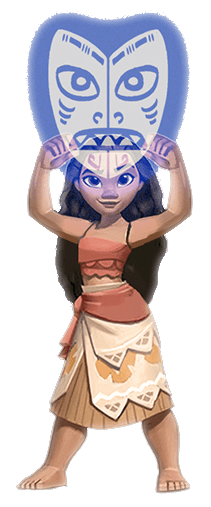
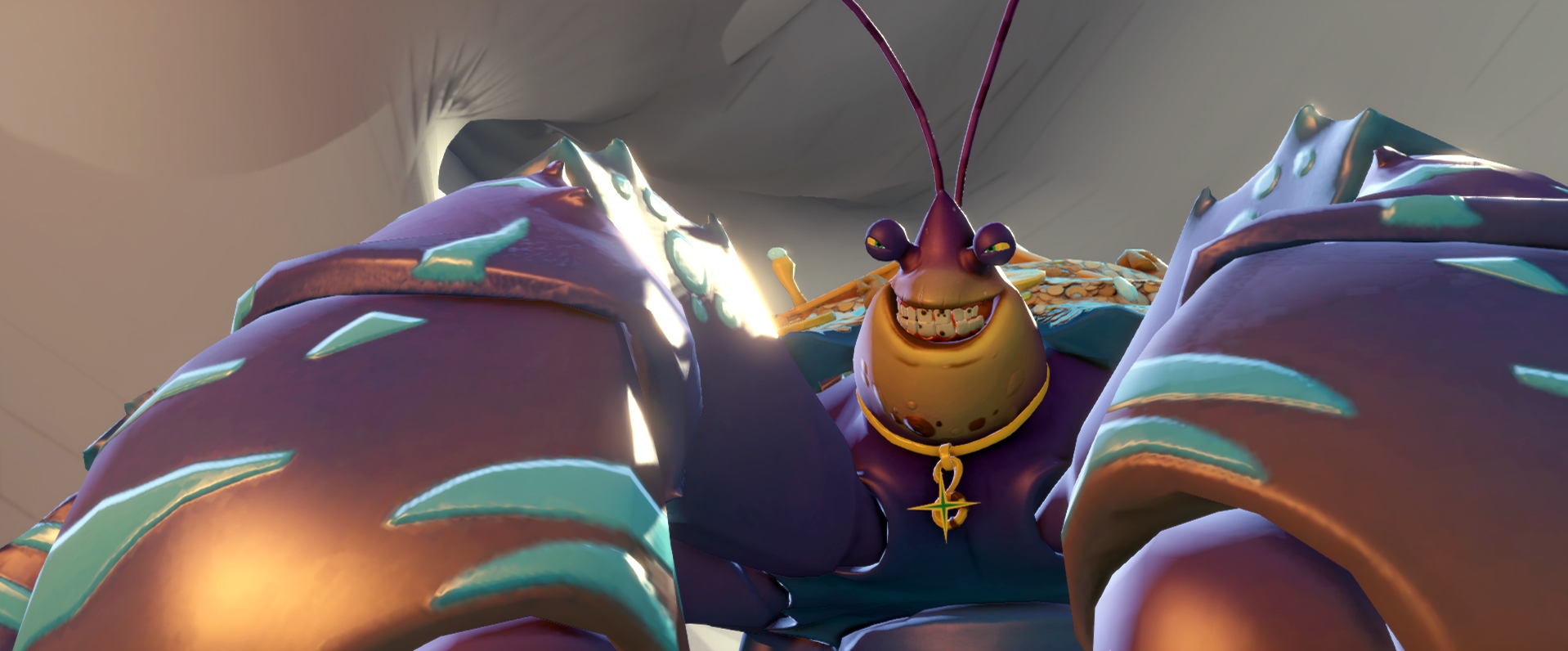
TAMATOA'S LAIR - BOSS FIGHT
Lalotai couldn’t be called a Dungeon if there wasn’t a guardian protecting it. In this case, the guardian is an evil crab who keeps treasures hidden in his lair. This same crab was the one who initially stole Maui’s Magic Fish Hook, so it goes without saying that they hate each other.
Tamatoa’s Boss Fight is the perfect moment for the players to prove everything that they have learned about the powers of the Fish Hook. This is the mastery test. When designing Tamatoa, we wanted to explore a Timed Hook Pull interaction in a dangerous environment. To do so, we decided that Tamatoa would be wearing one of his treasures around his neck, forming the traditional Hook Interaction that the player would have learned throughout the Dungeon.
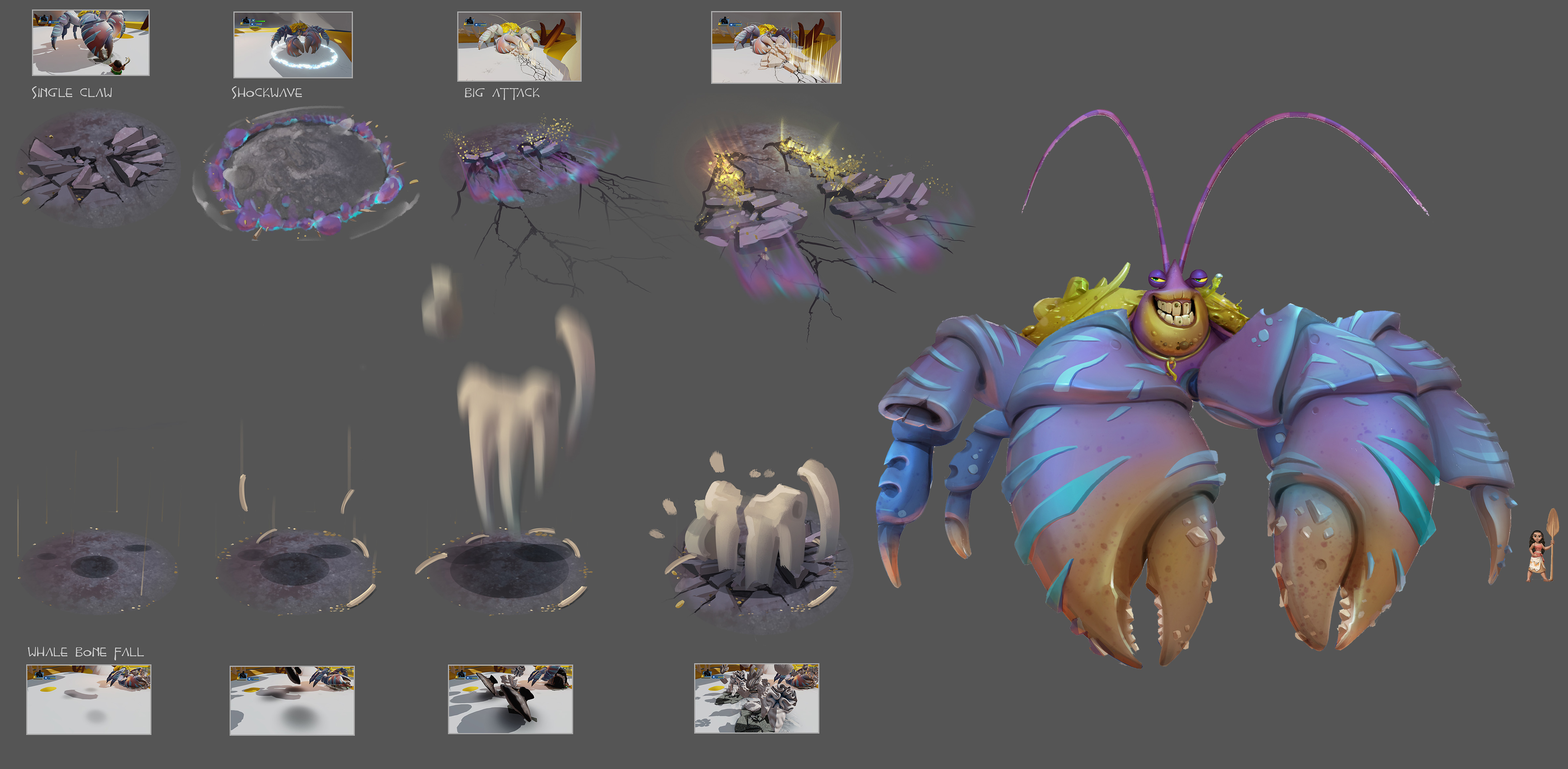
To beat him, the player need to dodge Tamatoa’s claws and jump avoiding his shockwaves. Once Tamatoa is about to make a bigger pound attack, the player have a time window to Hook Pull its necklace, dragging his face down to the floor and finally being able to punch it to death.
During the second phase of the boss fight, Tamatoa starts to pound the floor more rapidly, making corals, bones and rock fall from the roof. The player then needs to avoid these while also jumping over other wave of shockwaves and getting the best window to pull and attack his face again.
Initially, our plan was to re-use the Magic Mask mechanic during this combat, but after some playtest and iterations, we found that this was too demanding on players. By constraining ourselves to only using the Fish Hook, we could make a more interesting and dynamic experience that tested well with kids. Tamatoa turned out to be a great boss and we often saw many kids having fun, and coming up with unique strategies, when fighting in multiplayer against him!
OTHER PORTFOLIO PIECES
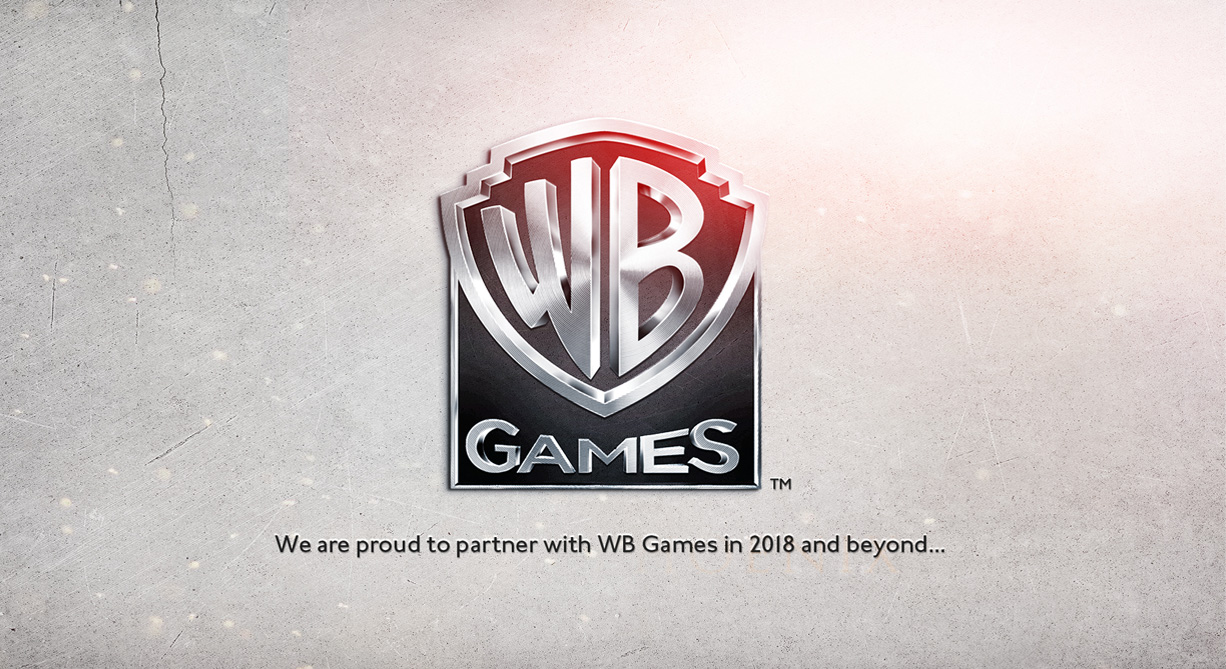
Hogwarts LegacyLead Designer
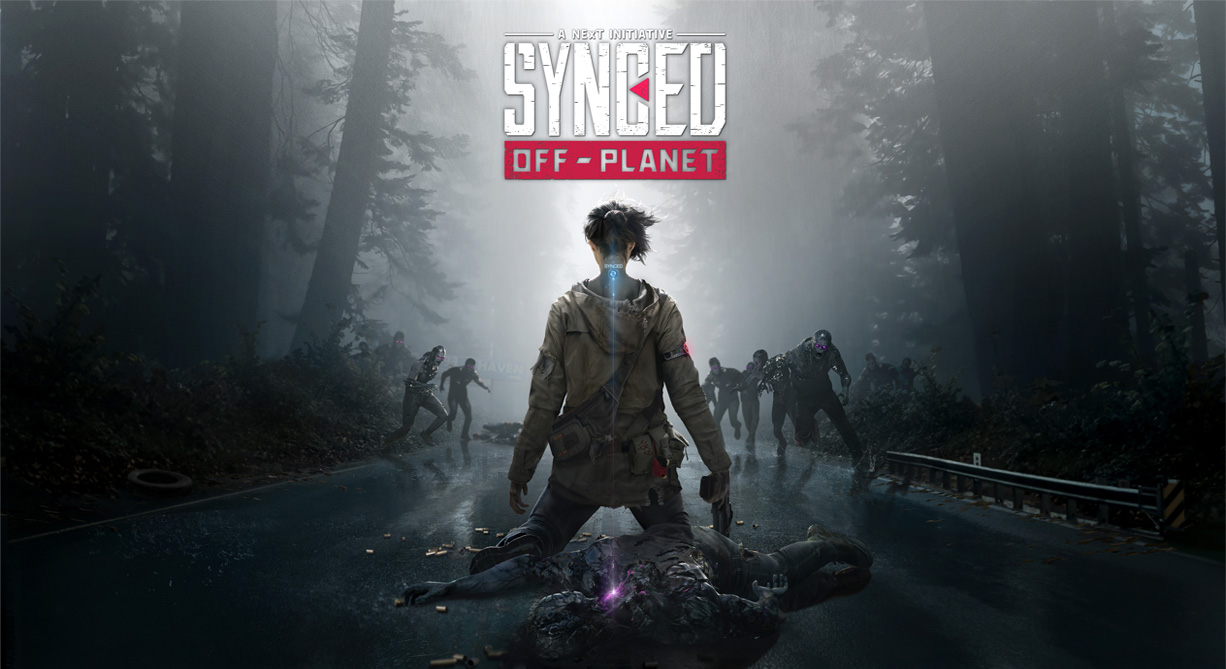
Synced: OFF-PlanetLead Designer
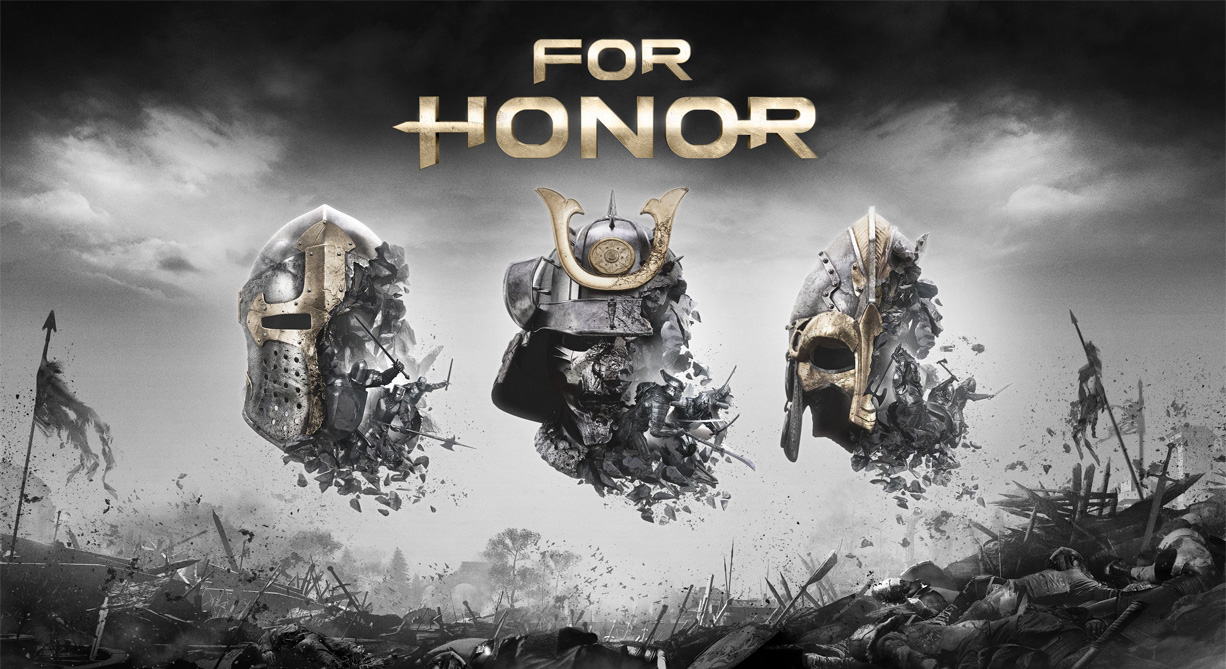
For HonorLead Designer
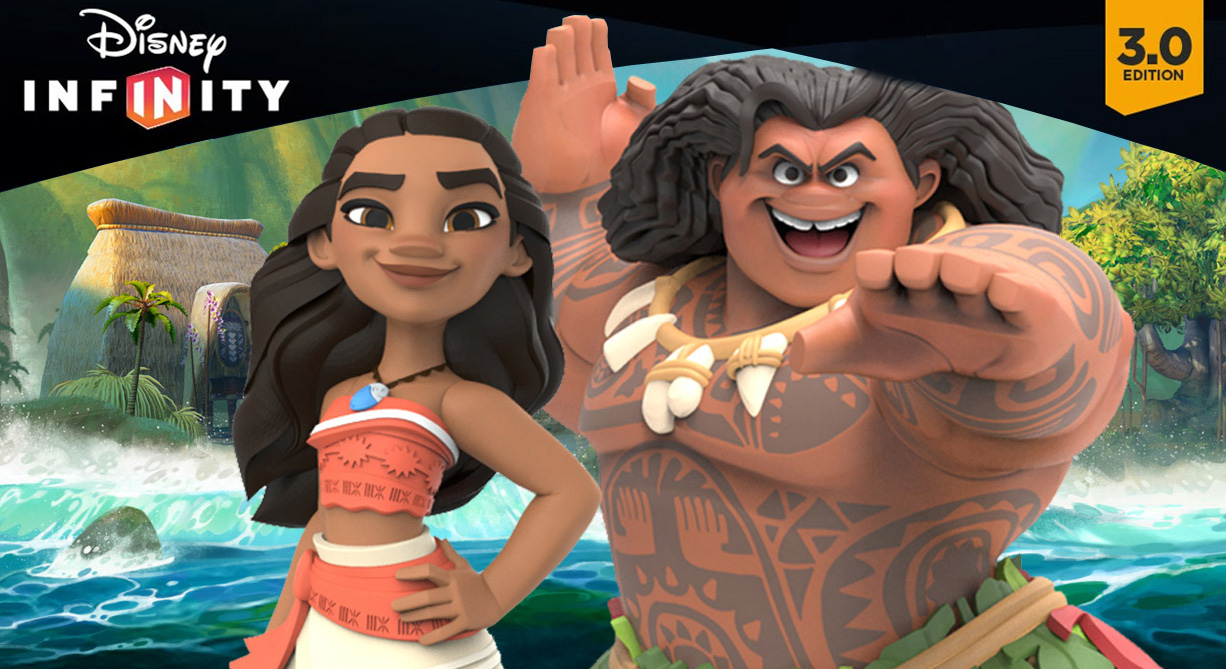
Disney Infinity: MoanaSenior Designer
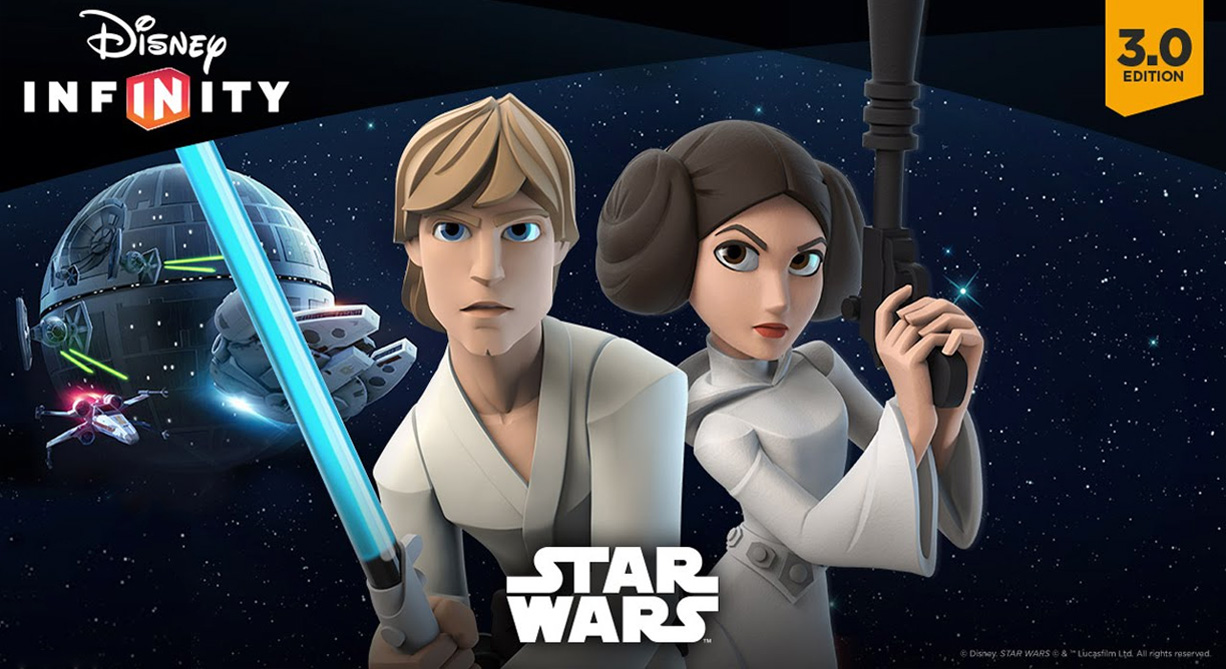
Disney Infinity: Star Wars Rise Against the EmpireGame & Level Designer
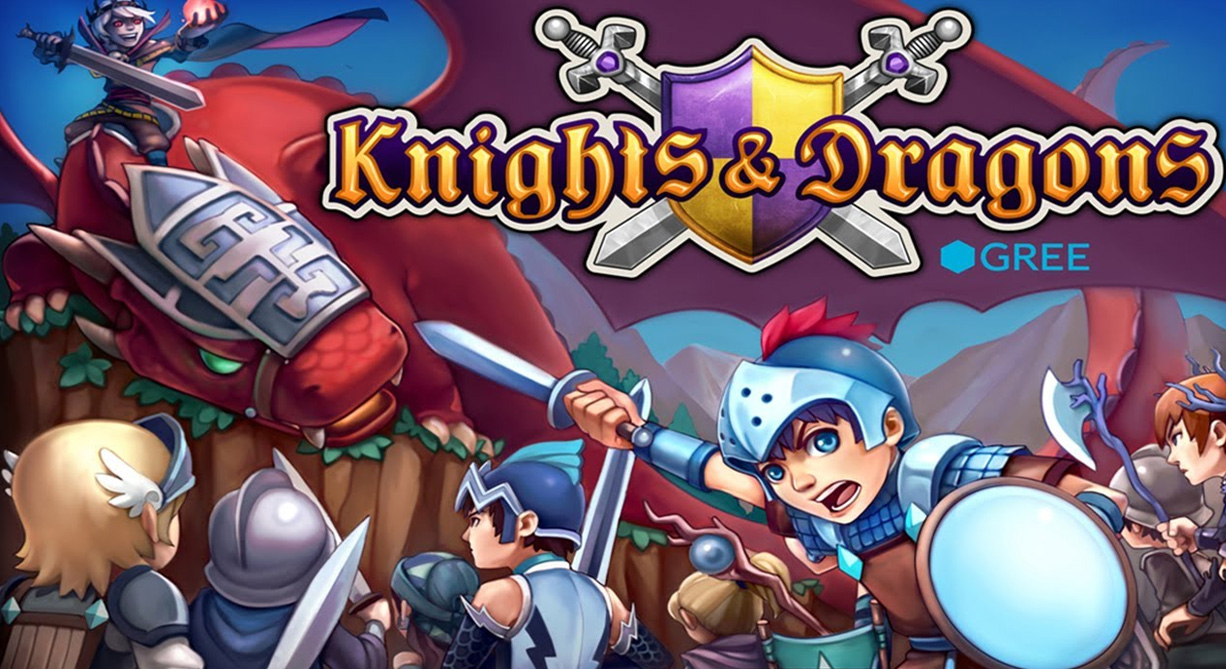
Knights and DragonsGame Designer & Live Ops

